Hello, fright-seekers! You are in for a real treat today. We will be looking into all kinds of Lovecraftian monsters! An American novelist named Howard Phillips Lovecraft is usually considered as a predecessor of modern horror fiction. Despite his controversies, Lovecraft was a groundbreaking horror novelist who influenced and inspired a slew of horror-related artists, including writers, filmmakers, singers, and painters.
Lovecraft’s stories are well-known for their strangeness, and he was a master at capturing the dreadful atmosphere that surrounds his works, an atmosphere that drew you in so thoroughly that you felt as if you were there yourself. His writing style is easily recognizable, and although being repetitive at times, it remains one of the most unique and unusual in horror literature history.
A subgenre or style of horror fiction inspired by H.P. Lovecraft’s work is known as “Lovecraftian horror” He is also known as the “Father” of the cosmic horror subgenre, which he frequently incorporates into his work. His horror stories are divided into two major cycles: the Dream Cycle, which is about the fabled “Dreamlands,” and the Cthulhu Mythos, which is about a vast mythology of monstrous creatures.
Both of these books display a lively turmoil that has horrified readers for more than a century. In today’s film, we will take a look at that chaos and compile a list of all the terrifying Lovecraftian monsters that have appeared in his stories, as well as those by other Lovecraftian authors.
Shoggoth
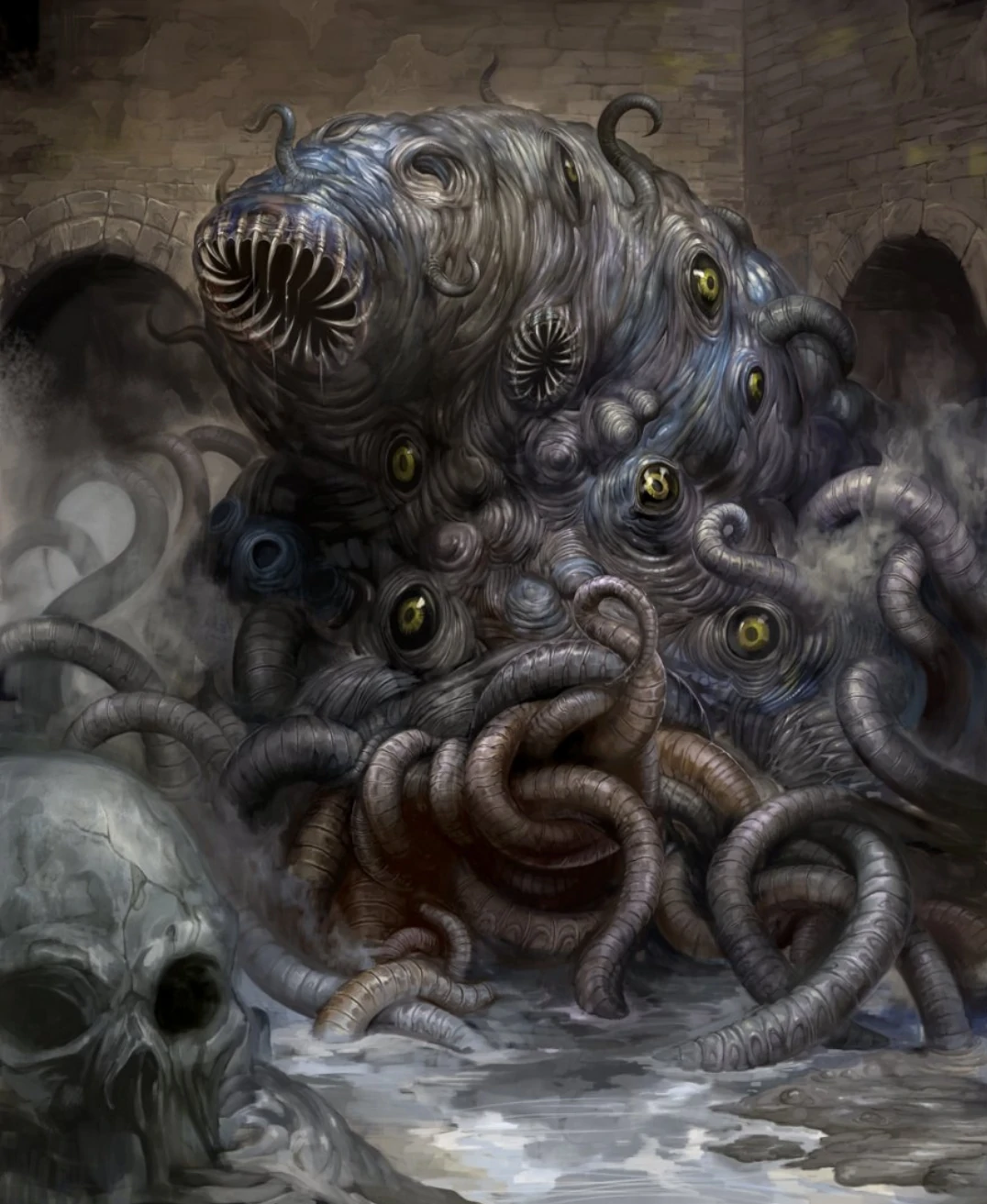
The creature debuted in the book, At The Mountains Of Madness by H.P Lovecraft. A shoggoth, like a huge amoeba, is a sentient blob of self-shaping gelatinous flesh. If a shoggoth moulded itself into a spherical, it would be around 15 feet in diameter, but there are larger and smaller variants.
A shoggoth can shape itself into whatever organs or shapes it requires at the time; yet, in its natural state, it has a seething profusion of eyeballs, mouths, and pseudopodia. It had the ability to move at amazing speeds when it was discovered at the South Pole. It was like watching a train approach someone who was standing on the train tracks. The shoggoth may murder its opponents by surrounding them and creating enough suction to decapitate them. During their uprising, they fought the Elder Things in this manner. They apparently have a nasty, overwhelming odour that totally masks the Elder Things’ repulsive odour.
The Elder Things bred the shoggoths as animals who served them for underwater construction. They were great living building machinery because of their capacity to shape their bodies as needed. Despite being meant to be mindless, the shoggoths mutated over the aeons and gradually developed consciousness, even becoming rebellious on occasion.
They eventually toppled and slaughtered the Elder Things, and created their own towns. Their design is actually based on the Elder Things’ five-pointed symmetry. Some shoggoths have survived until the contemporary period, most notably in Antarctica and the deepest portions of the world’s oceans, despite their rarity. The Deep Ones, a race of humanoid amphibious beings, are known to work with or use shoggoths, often known as “Sea Shoggoths.”
Azathoth
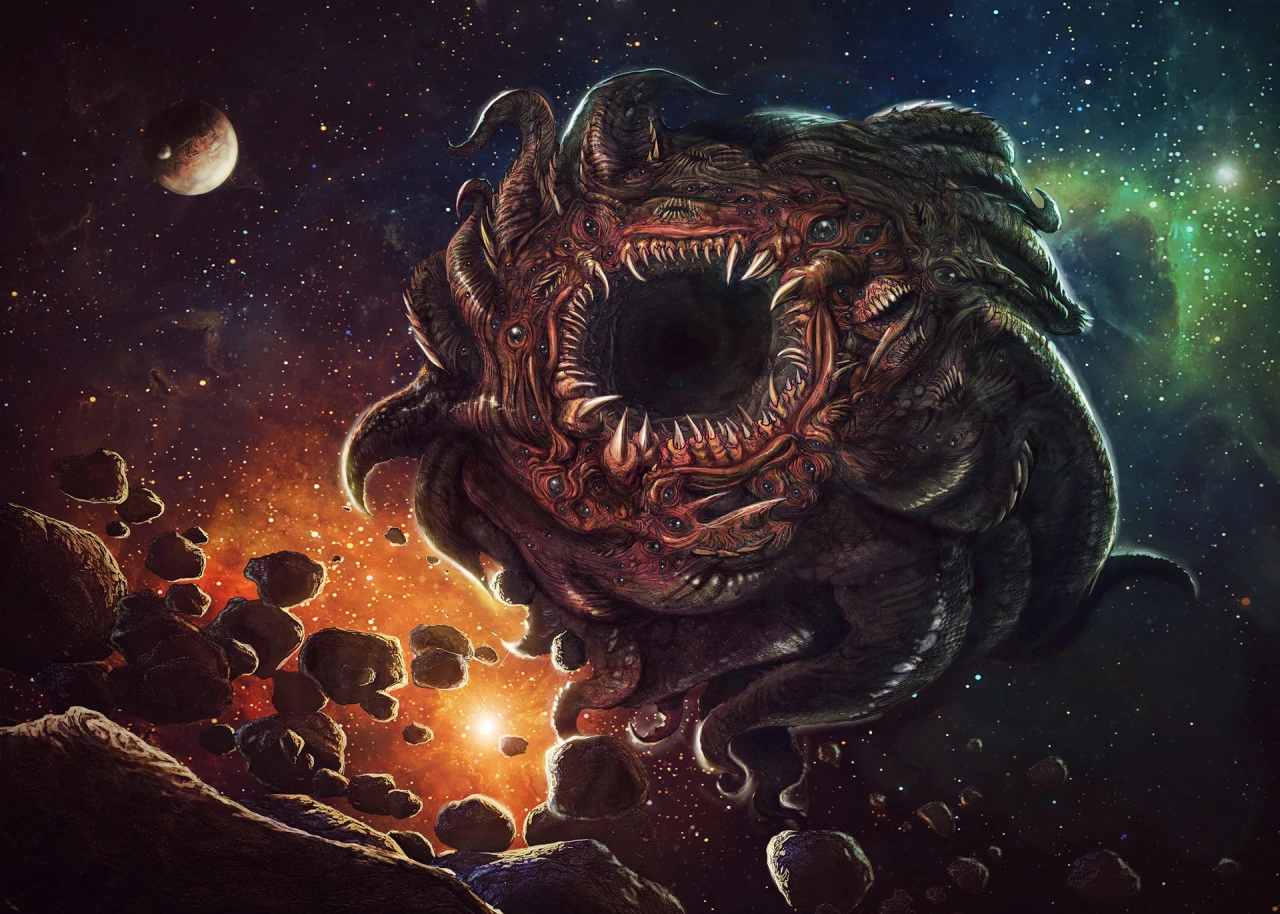
Azathoth is an Outer God who is also known as “The Blind Idiot God,” “Nuclear Chaos,” “Daemon Sultan,” “The Deep Dark,” and “The Cold One.” Azathoth is impossible to describe precisely because everyone sees him differently and he is constantly changing. It’s a gigantic, sensitive black hole, according to some reports. Azathoth’s physical manifestation in the universe has been proved to be continuous with a point in the galaxy’s central area known as Sagittarius A, the supermassive black hole at the Milky Way’s heart. In his work The Dream-Quest of Unknown Kadath, Lovecraft developed the creature.
Albert Wilmarth and Walter Gilman are both shocked at the mere mention of Azathoth’s name, which they both read about in the esoteric book, indicating that he is a powerful malicious influence in the Necronomicon. In Gilman’s case, it is the witch Keziah Mason who refers to Azathoth as she pursues his dreams, telling him, that he must meet The Black Man, and go with them all to Azathoth’s throne at the heart of ultimate Chaos. He must sign the book of Azathoth in his own blood and adopt a new hidden name..
The fact that he had seen the name ‘Azathoth’ in the Necronomicon and knew it stood for a primal horror too horrible to describe kept him from going with her. The Goatswood townspeople, who perform “obscene rites” involving “atrocities on living victims,” are among its many followers. In Azathoth’s conical temple, insects have fled the destruction of their home planet of Shaggai, bringing the temple with them across the universe, spreading his influence.
Cthulhu
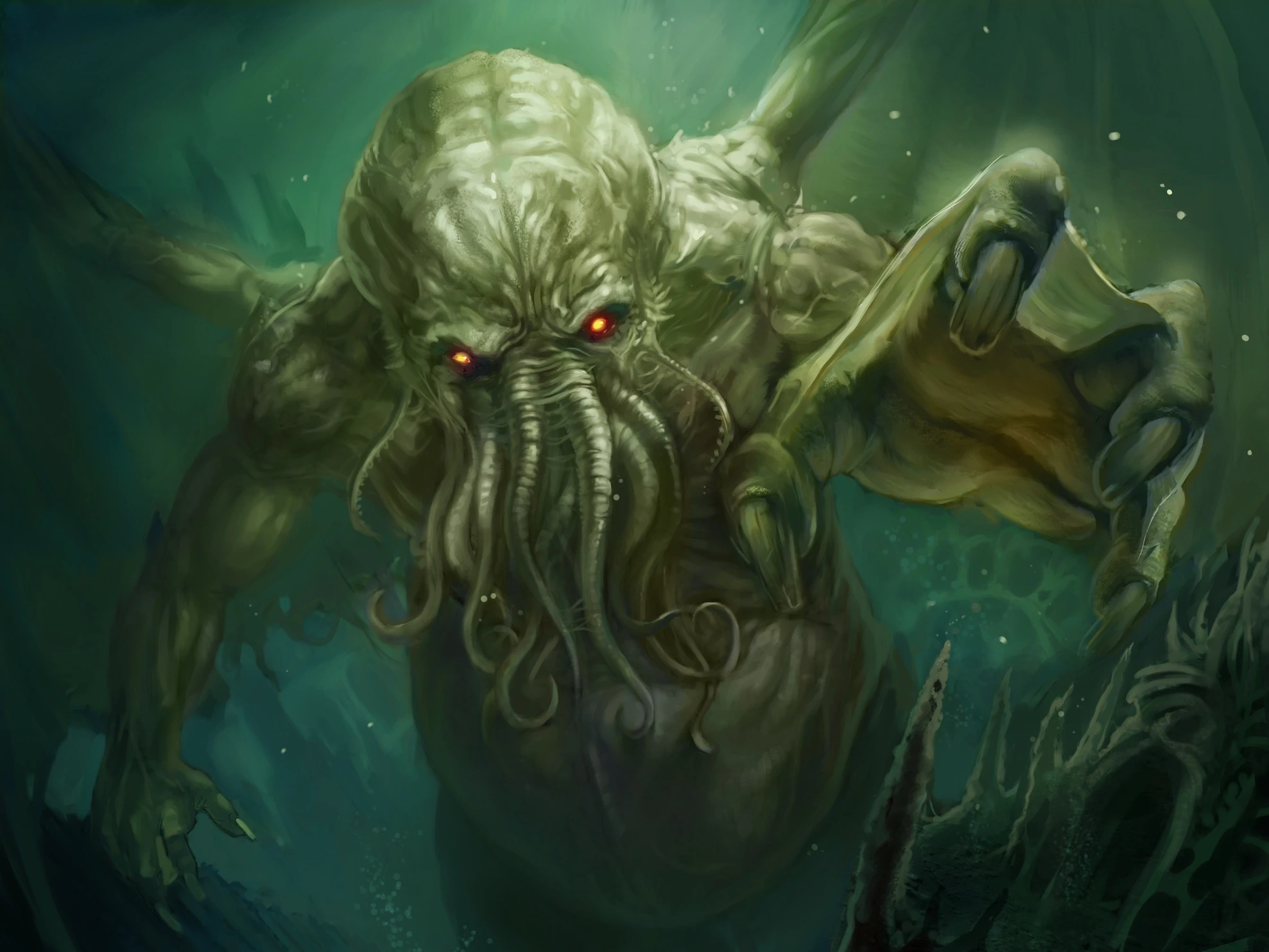
Cthulhu is a fictitious god-like entity created by H.P. Lovecraft, a 20th-century horror writer. This scary cosmic being first appeared in Lovecraft’s short story “The Call of Cthulhu,” and is characterized as a manifestation of chaos and destruction. This one is obviously the best known out of all of Lovecraft’s monsters. Cthulhu has the look of a giant humanoid being with anthropoids and cephalopodic characteristics. He – or rather it – has a man’s upper body, but its back is covered with tiny, webbed wings, and its arms and legs end in clawed digits.
Cthulhu’s most distinguishing characteristic is its head, which resembles an octopus. The head is largely made up of a big, bulbous, pulsing sac, with multiple writhing tentacles sprouting from where a mouth should be. Cthulhu can grow to be hundreds of meters tall, but it can change its size and shape at will, ranging from the size of a man to the size of a continent and capable of generating whatever number of limbs it desires.
Cthulhu is said to have a worldwide cult with its base in Arabia, with followers as far away as Greenland and Louisiana. In China’s highlands, there are cult leaders who are supposed to be immortal. Some of these cultists describe Cthulhu as a great priest of the Great Old Ones who lived eons before there were any men, and who appeared out of the sky to the newborn world. Cthulhu is a descendant of Yog-Sothoth, who may have been born on Vhoorl in the 23rd nebula. On the planet Xoth, he mated with Idh-yaa. Ghatanothoa, Ythogtha, Zoth-Ommog, and Cthylla are his offspring. He is also supposed to have mated with the being Nyarlathotep, giving birth to Ilyth’la.
Nyarlathotep
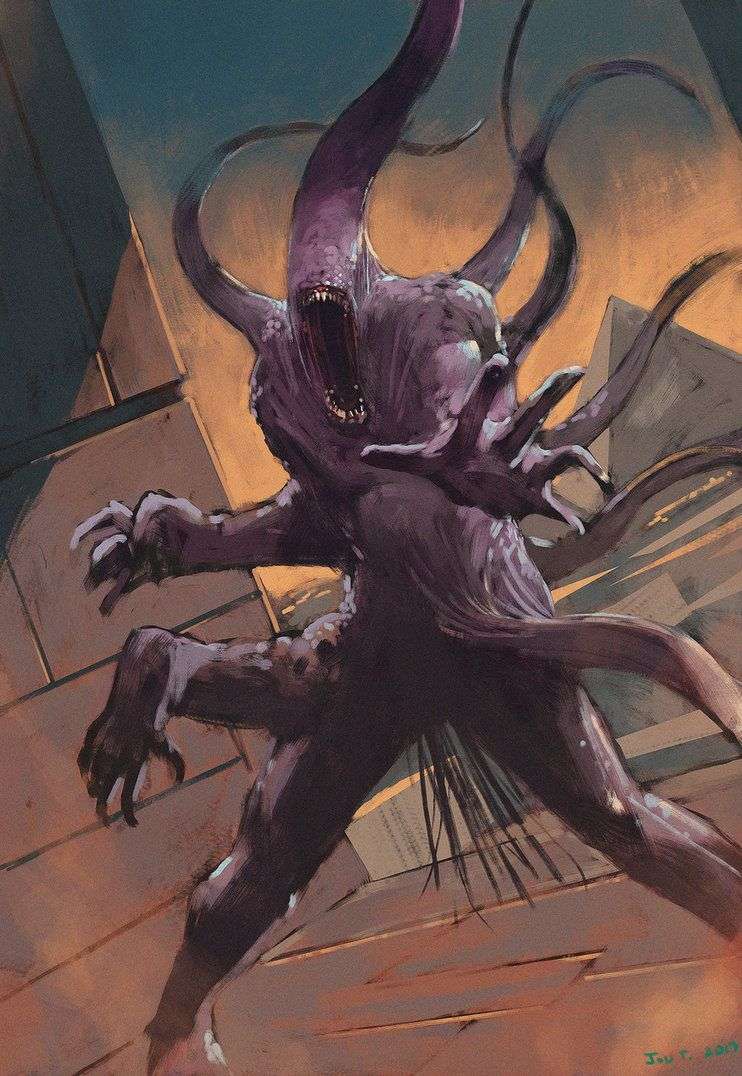
Nyarlathotep, often known as The Crawling Chaos, is an Outer God in the Cthulhu Mythos. H. P. Lovecraft created him, and he first appeared in the prose poem “Nyarlathotep.” He is Azathoth’s offspring. Nyarlathotep reappears in several following Lovecraft stories, as well as in the works of other authors and role-playing games based on the Cthulhu Mythos.
Nyarlathotep is distinct from the other deities in the Mythos in several ways. Most of the Outer Gods, such as Yog-Sothoth and Azathoth, are exiled to the stars, and most of the Great Old Ones, such as Cthulhu, is asleep and dreaming; Nyarlathotep, on the other hand, is active and frequently wanders the Earth in the appearance of a human being, generally a tall, skinny, joyful man. He has “a thousand” more forms and manifestations, many of which are said to be horrifying and sanity-destroying.
In the absence of the other Outer Gods, Nyarlathotep serves many cults and manages their affairs. Most Outer Gods speak weird alien languages, whereas Nyarlathotep speaks human languages and may easily pass for a human if he so desires. Nyarlathotep appears to be purposefully deceitful and manipulative, even resorting to propaganda to attain his objectives. He is arguably the most human-like of the Outer Gods in this way.
Nyarlathotep is the Outer Gods’ “messenger, heart, and soul,” as well as their “immemorial figure of the deputy or messenger of hidden and terrifying forces.” He is also Azathoth’s servant, and he promptly performs his master’s fitful, spastic demands. Unlike the other Outer Gods, spreading lunacy is more vital and delightful to Nyarlathotep than death and destruction. Some believe he will destroy the human race and even the entire planet.
Dagon
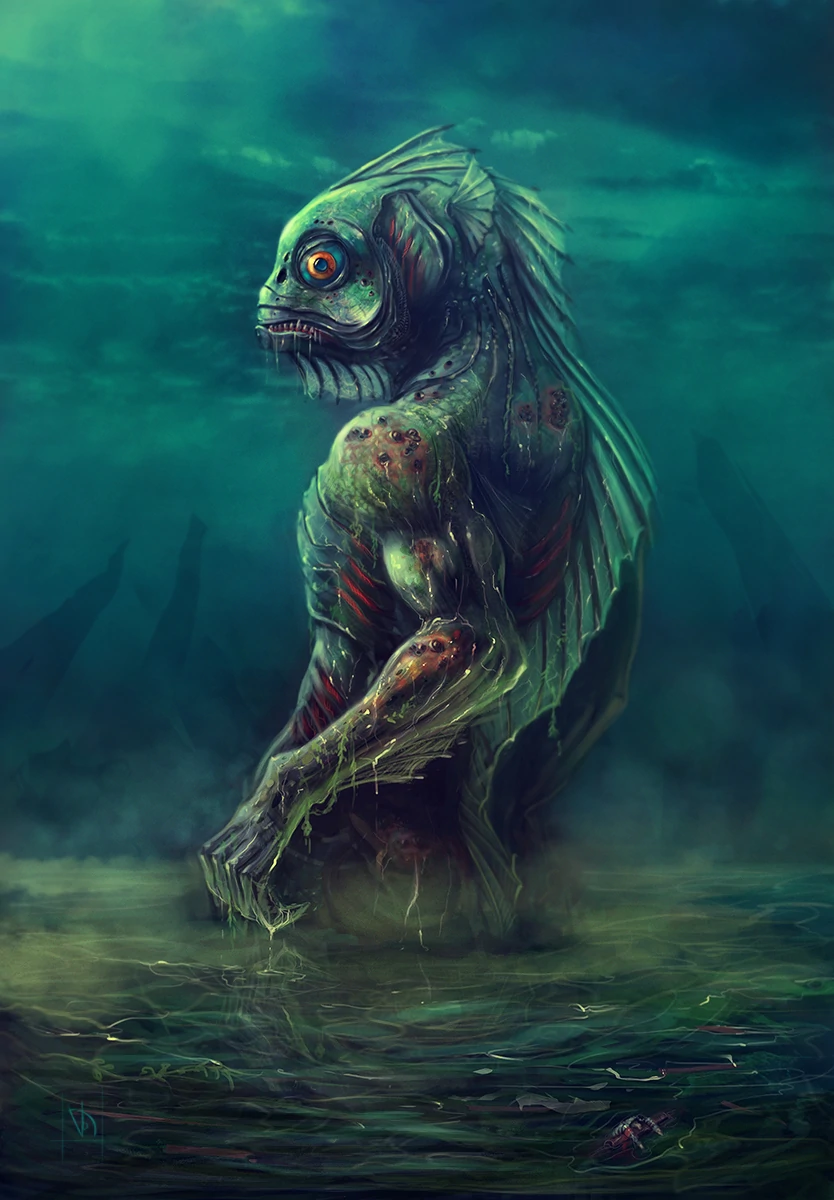
Dagon is a deity who governs the Deep Ones, an amphibious humanoid race that lives in the Earth’s waters. He first appears in Lovecraft’s short story “Dagon,” and he is heavily referenced throughout the Cthulhu Mythos. Although both are deities, they are not commonly regarded as Great Old Ones. They are also known as Father Dagon and the consort of Mother Hydra.
The Esoteric Order of Dagon, an Innsmouth-based hidden cult, worships him. Some Deep Ones are said to grow to monstrous proportions in their old age. These people gave rise to the Dagon cult, which worships these beasts as deities. They are, in reality, entirely physical individuals whose advanced age contributes to their enormous stature. There is fossil evidence that the oldest, largest of these species grew to be nearly 50 feet tall.
Dagon is a massive iteration of the Deep One, who has been described in books since antiquity. A devoted cult of men and the Deep Ones venerate him as a divinity. While it appears to be everlasting, its longevity can be traced to its friendship with the Star Spawn, who occasionally chooses formidable specimens of a specific species to preserve, care for, and strengthen for reasons known only to them. Don’t confuse the Dagon with the deep ones because there are old Dagon-related statues depicting numerous colossal Deep Ones grappling with whales.
Great Old One
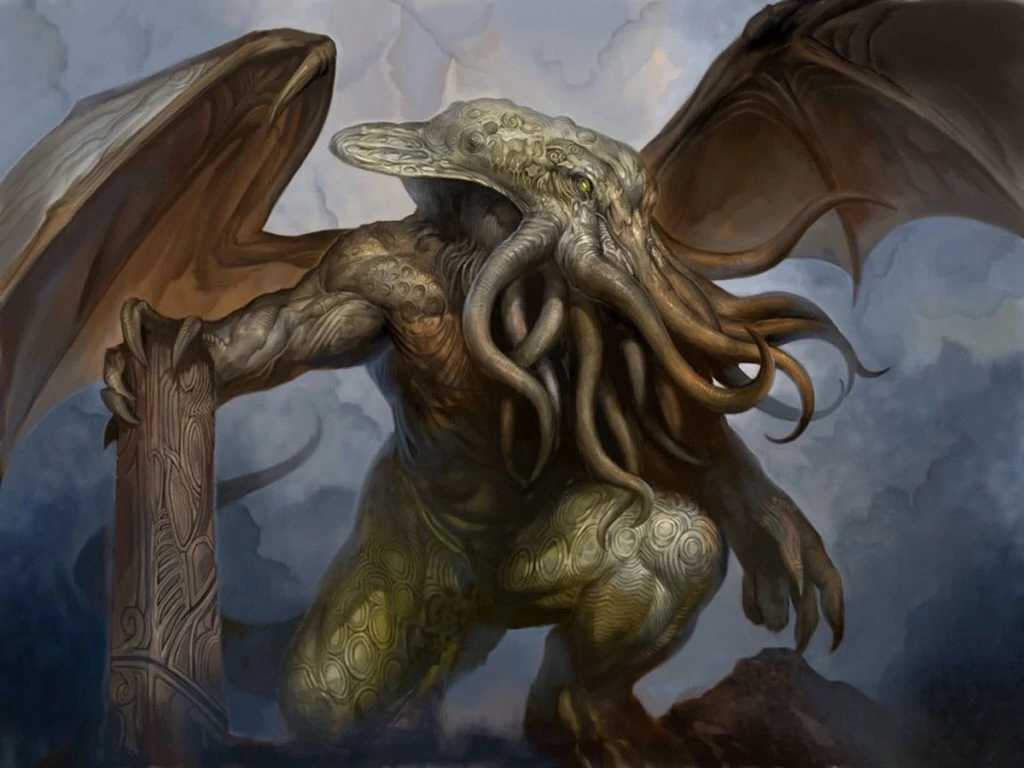
No two Great Old Ones are exactly alike, despite sharing comparable qualities. They are ancient, powerful creatures whose roots lie in the deep past of the cosmos. Most are colossal monstrosities formed from the very fabric of the universe and virtually impossible to destroy; they have minds whose thought processes are incomprehensible to humans; they show little to no regard for the consequences of their actions on lesser beings, and they drive anyone who sees their true form insane.
Furthermore, the majority of them have the ability to influence the minds of sentient beings even when they are sleeping or inert. Initially thought to be just indifferent to the destinies of those unfortunate enough to be in their company, recent writings have revealed that the majority of them are openly antagonistic to the mortal population of the cosmos.
In general, Great Old Ones are restricted to the globe they inhabit, although a handful are capable of extending their reach across the gulf of space to worlds orbiting other stars. The ceremonial services of their various cults can occasionally be of use in this situation. Many people believe that the Great Old Ones have individual affinity to the elements of Earth, Air, Fire, and Water.
Many of the Great Old Ones are revered as gods by mortal cults, both human and nonhuman. A Great Old One can use these cults in a variety of ways: some are dedicated to spreading the Great Old One’s power, others want to extend the creatures’ coven of servants, while yet others simply hope to see their master released from their chains.
Yog-Sothoth

Yog-Sothoth is a cosmic being as well as an Outer God. He is the ancestor of Cthulhu, Hastur the Unspeakable, and the Voormi, having been born of the Nameless Mist. He is also Wilbur Whateley’s father. Yog-Sothoth, like many Lovecraftian gods, appears in a variety of stories from the Cthulhu Mythos.
It first appeared in The Case of Charles Dexter Waro, written by Lovecraft. However, it appears that Yog-Sothoth reveals itself visually as a mass of glowing spheres, with eyeballs or tendrils in some versions and just spheres in others. It is highly hinted, if not explicitly stated, that Yog-Sothoth is omniscient and trapped outside of the cosmos, which means he can know and see all of space-time at the same time, implying that Yog-Sothoth has no hidden secrets.
Yog-Sothoth was reported to have been summoned in one case, involving the city of Dunwich, for the purpose of impregnating a human lady, who then gave birth to two partially human children. The conjurer was the Whateley family’s husband/”father,” who was known to stand on a hill in a stone circle with the Necronomicon and summon Yog-name Sothoth’s from above.
It is said that Yog-Sothoth is familiar with the gate. The gate is Yog-Sothoth and Yog-Sothoth is the gate’s key and keeper. In Yog-Sothoth, the past, present, and future are all intertwined. He knows where the Old Ones broke through in the past and where They will break through in the future. He knows where They have trodden the earth’s fields, where They are treading them now, and why no one can see Them as They tread.
Nightgaunt

This one is quite horrifying because of its grotesque appearance. Night-gaunts are a type of flying creature that inhabits Earth’s Dreamlands and play an important role in the Dream Cycle series. They have smooth, whale-like skin, long, slender humanoid bodies, curved horns on their heads, leather bat-like wings, and a blank expanse of flesh where a face should be. They see Nodens as their lord and master, and they revere and worship him. Night-gaunts have a fascinating backstory, as they are based on creatures that appeared frequently in Lovecraft’s nightmares as a boy.
They are described by Lovecraft as frightening and uncouth black beings with smooth, oily, whale-like surfaces, nasty horns that bent inward toward each other, bat wings that made no sound, horrible prehensile paws, and barbed tails that lashed needlessly and unsettlingly. In his dreams they were more tarrying than anything he had seen or known because they never spoke, laughed, or smiled because they had no faces to grin with, only a suggestive blankness where a face should be. They only ever clutched, flew, and tickled. These ones are definitely nightmare fuel.
Outer God
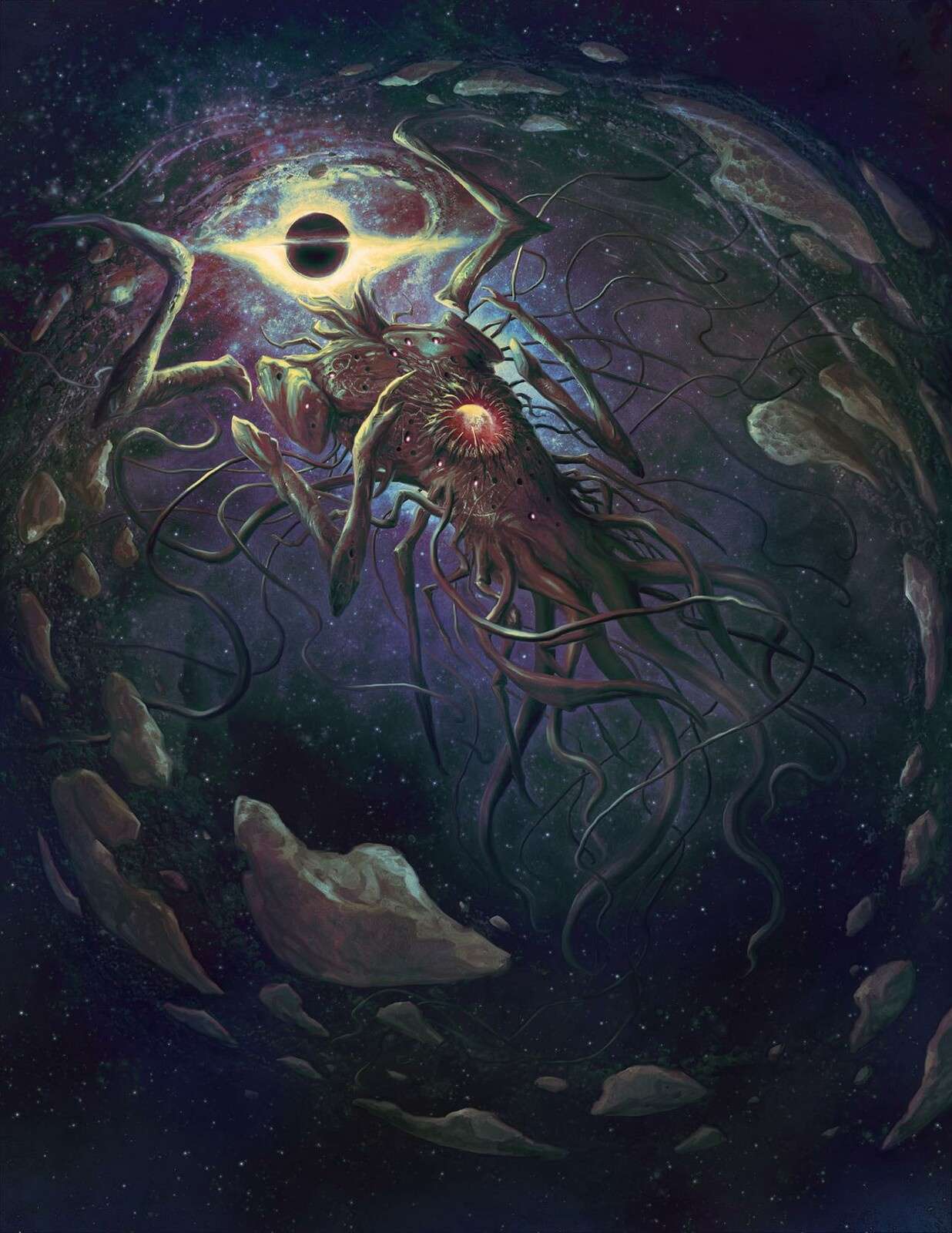
All Outer Gods are unique, but they all share some basic characteristics: they are enormously powerful entities that have existed for untold millennia, they have thought processes and personal goals that are completely incomprehensible to mortal minds, and they have physical forms that are enough to drive a man insane.
Furthermore, due to their long struggle with the Elder Gods, most are currently imprisoned in some remote region or completely locked out of our plane of existence, despite the fact that all are able to exercise some impact through their enormous psychic skills. While the Outer Gods’ objectives are unknown to us, the vast bulk of these celestial beings are inimically opposed to all other life. As a result of this mentality, other races often see the Outer Gods as “bad.”
Azathoth, the Blind Idiot God, rules over the Outer Gods and is thought to sit in the center of the universe. Yog-Sothoth, his co-ruler, appears by his side, and the two are surrounded by a crowd of their followers who dance for them to the music of a demoniac flute. The power of the Elder Gods’ star stones makes the Outer Gods vulnerable, albeit the nature of this weakness has never been revealed.
These artifacts are used to confine those who are imprisoned. The Outer Gods’ origins are shrouded in obscurity. Some believe they have existed from the beginning of time, while others believe they were unleashed by some ancient creature of immense evil, and still others believe they originated countless millennia ago in a distant galaxy.
Deep One
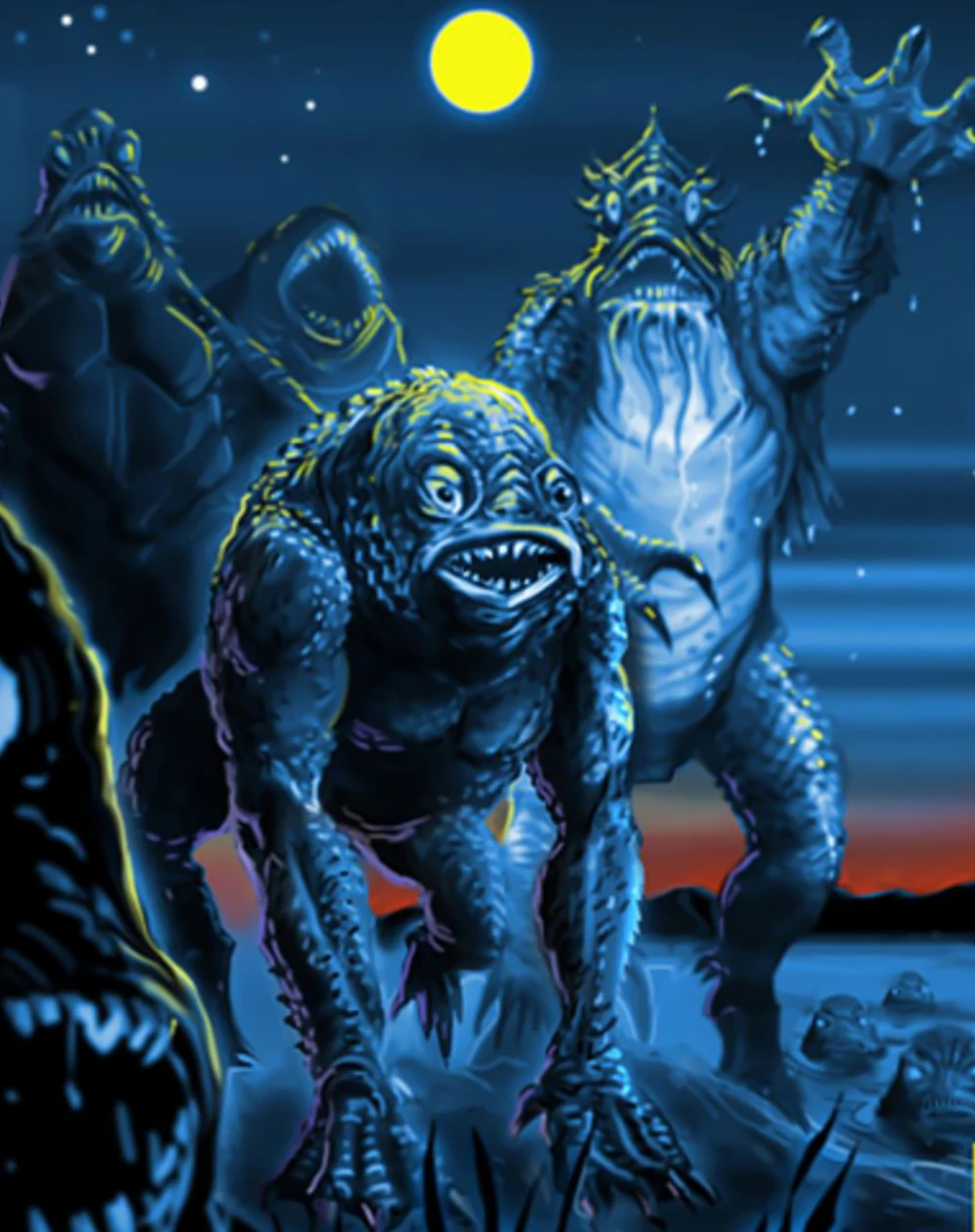
Deep Ones are humanoid in form and are predominantly aquatic in nature, however, they may survive on land indefinitely. They lack hair, have scaly fish-like skin, feathered gills on their necks or upper torsos, and webbed hands and feet that let them navigate beneath the waters. Their heads are supposed to resemble those of frogs or fish, and they have huge, unblinking eyes that provide them with great vision in the ocean’s depths.
Deep Ones are functionally immortal, meaning they will never die unless they are subjected to violence or an accident. Furthermore, for unexplained reasons, certain Deep Ones will continue to expand over the course of their lifetimes and become truly monstrous beings.
While some unsubstantiated tales claim that the Deep Ones arrived on Earth many years ago from a distant star system, what is known is that they have resided on this planet as a species with advanced technology since long before mankind learned to walk upright and use tools.
Little is known about the Deep Ones’ real social practices, though their cities have been remarked to have a certain grandeur that some have compared to the edifices created by the Roman Empire in ages past. Deep Ones, as marine animals, prefer to construct their cities on the ocean floor, away from the prying eyes of land-dwelling species. They have also been known to breed Shaggoth’s for construction purposes.
Rhan-Tegoth
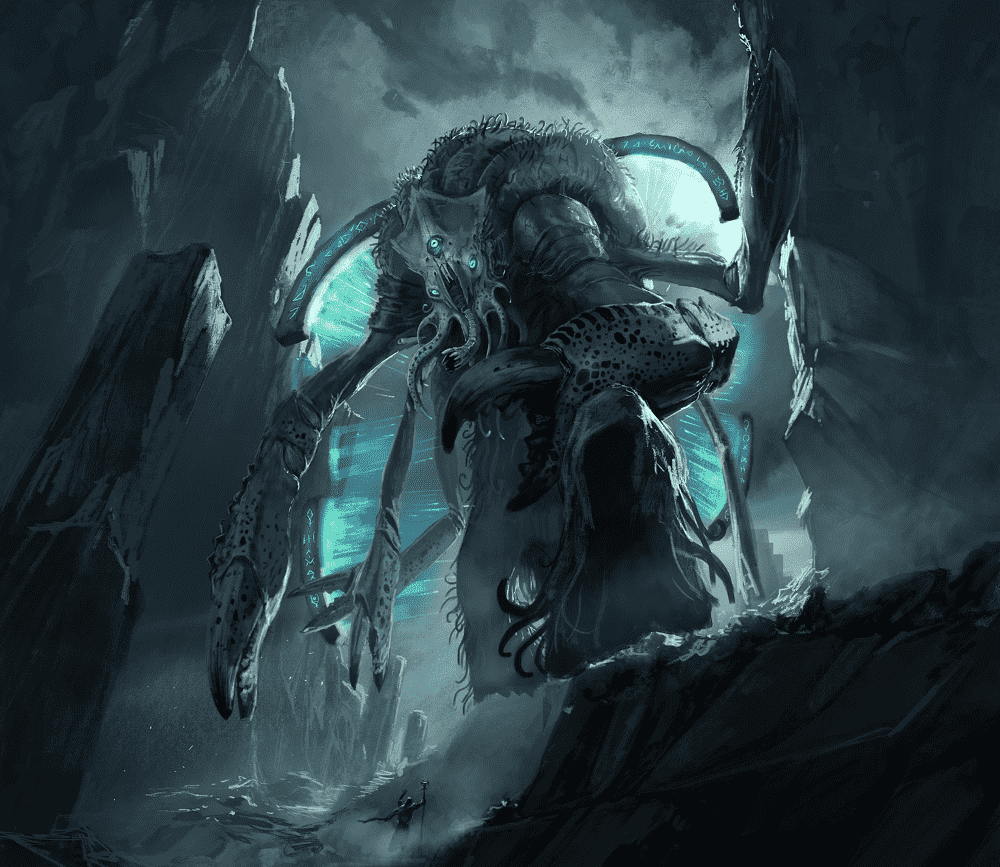
If critters and insects give you the creeps then this one is definitely not for you. Rhan-Tegoth is an insectoid amphibious god, one of the Great Old Ones, who resembles a 15-foot jellyfish and is important to the return of the Great Old Ones. He lived in Yuggoth’s warm oceans until arriving on Earth 3 million years ago, during the Pliocene, where he inhabited an area of Alaska before going into a trance-like sleep.
Rhan-Tegoth was the last of the Great Old Ones to sleep, and he should be the first to awaken. His body was discovered by George Rogers and moved to a museum in London in 1926, but it was then lost until it was discovered in Sheffield, UK, in the 1980s, and then in America in the 1990s by prehuman, cannibal Gnophkehs, but few humans are aware of it today.
The god is shaped like a giant bug, with a massive barrel-shaped trunk, six limbs that finish in claw-like pincers, and an almost spherical head covered in hair-like filaments or antennae, one nose-tentacle-shaped, and three small protruding ones Eyes. This monster first appeared in H.P. Lovecraft’s The Horror in the Museum. Do feel something crawling on your skin?
Yig
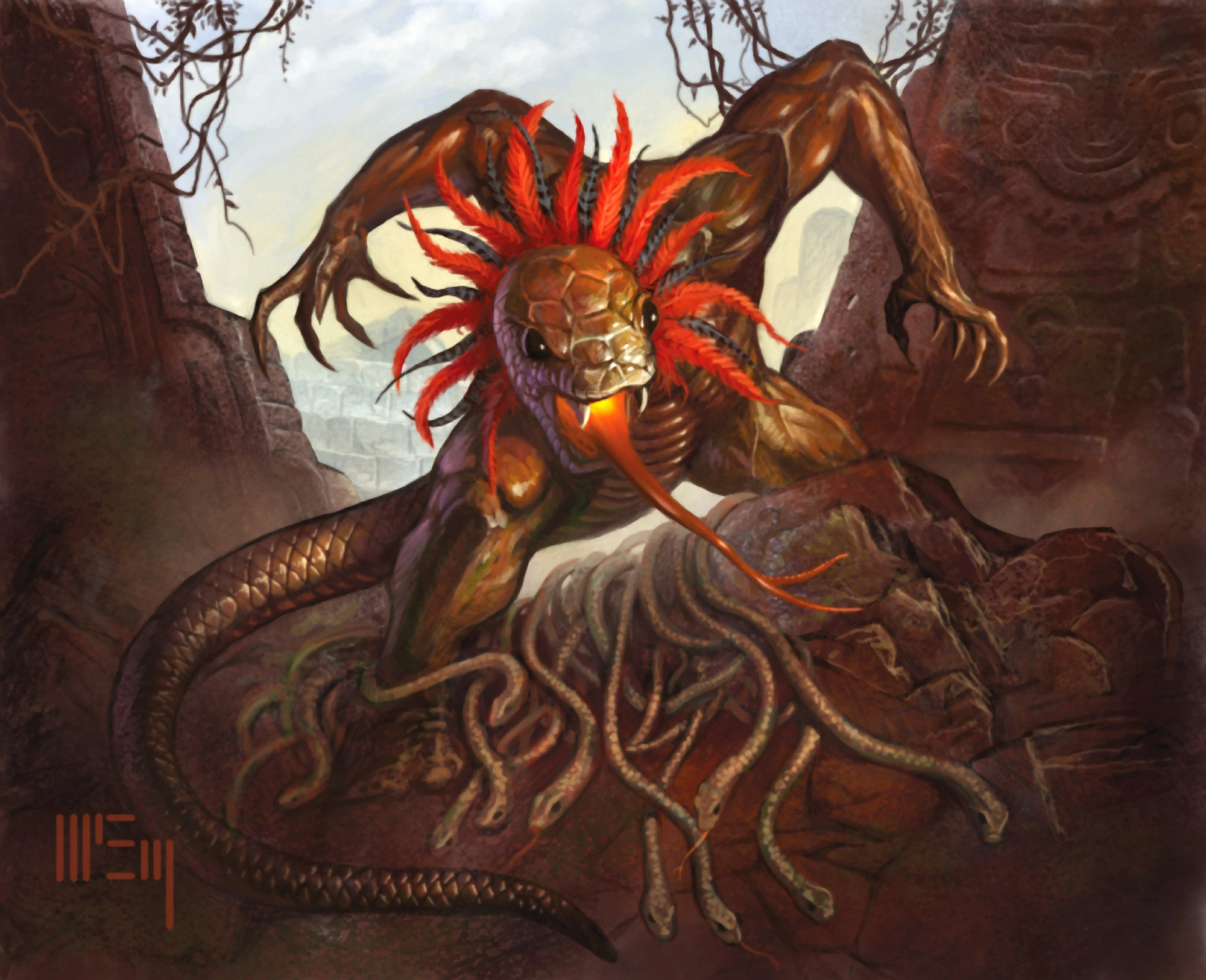
First, we had an insect god and now we have a snake god. Yig, also known as The Snake-God or The Father of Serpents, is a Great Old One from H.P. Lovecraft’s Cthulhu Mythos. Yig is the deity of snakes and serpents all throughout the world, manifesting as a huge snake with human arms, or sometimes as a reptile humanoid figure.
He has a strong attachment to his “children,” and he awakens every fall to punish those who injure them. He accomplishes this by either transforming them into serpents or serpent-like wretches or by sending other snakes to kill them while they sleep. There are many stories of Yig exacting revenge on humans who harm or kill snakes by making them hallucinate and kill their own loved ones as repentance.
Yig and his then-mate Coatlicue once governed the red cavern of Yoth beneath the subterranean continent of K’n-yan, where the two were worshipped as gods by the Serpent Men, the dwellers of Yoth. This arrangement came to an end when the Serpent Men switched their worship to Tsathoggua, and the great Yig cursed them. Yig is also supposed to be the deity behind the traditions of Kukulcan and Quetzalcoatl, which are revered by local tribes in Central and South America.
Yig is easily angered, yet he is also simple to please as long as no harm is done to his children, the snakes. A “Native American Ethnologist” undertook significant research on the snake tradition from Guatemala to Oklahoma in the early 1920s. Yig, he said, was the sinister counterpart to the more benevolent Quetzalcoatl and Kukulcan. This creature first appeared in Zealia Bishop and H.P. Lovecraft’s 1929 novel The Curse of Yig.
Mi-go
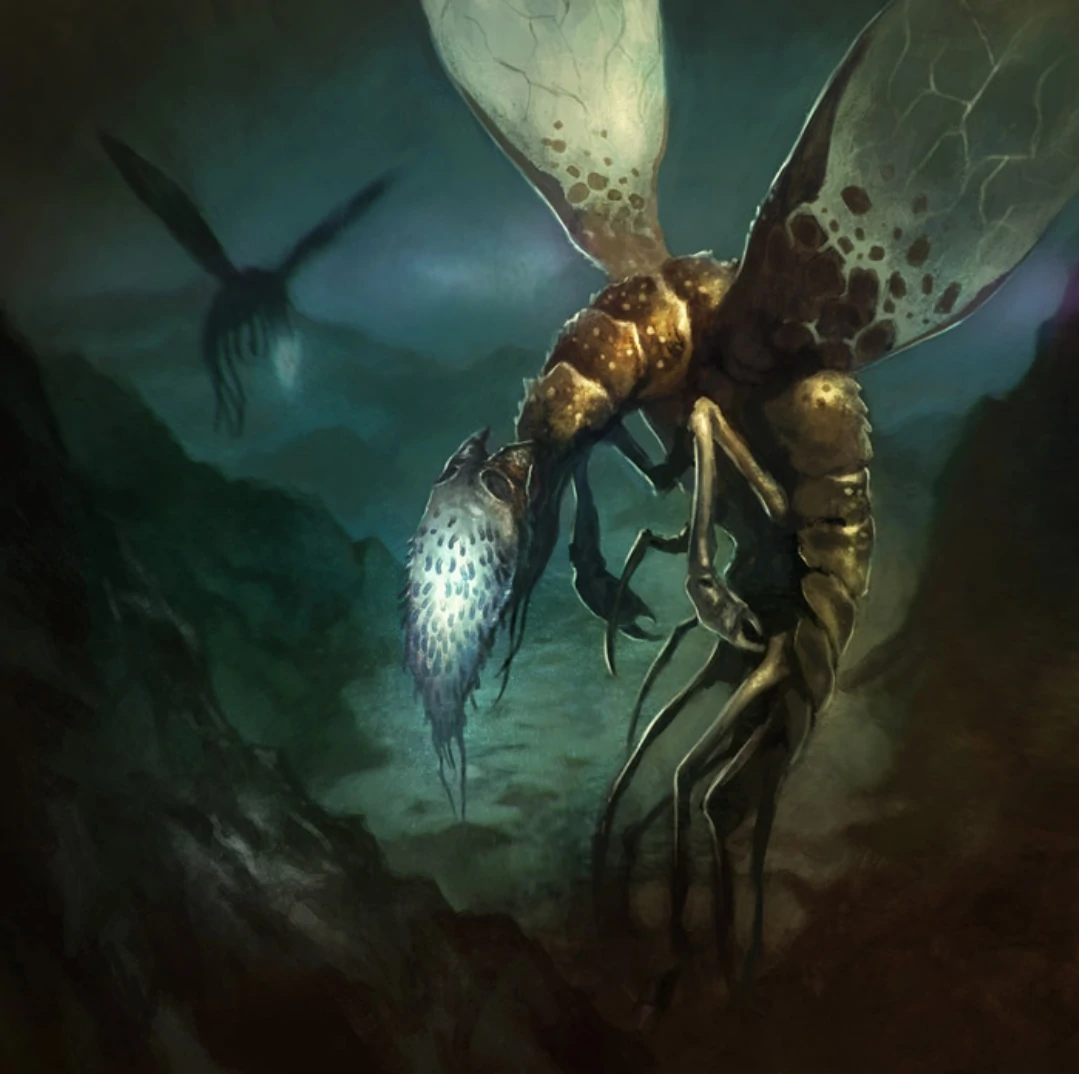
The Mi-Go are a species of aliens from the planet Yuggoth. They are described as flying monsters with enormous claws and antennae covering their heads. The Mi-go are a scientifically and technologically advanced breed with an in-depth understanding of surgical methods and neurobiology.
Mi-Go is pink, fungoid crustaceans with a “convoluted ellipsoid” composed of pyramidal, fleshy rings and covered with antennae where a head would normally be. They are around 1.5 m long and have several limbs joined in pairs on their crustacean-like bodies. They also have a pair of bat-shaped membranous wings that they utilize to fly through the “ether” of space; the wings do not work effectively on Earth. Some other races in Lovecraft’s narrative have wings like this one, implying that this is a common form of interplanetary travel.
The Mi-Go are fundamentally alien to earthly existence; their bodies, according to two descriptions in the original short story, are made of a type of stuff that does not normally arise on Earth. Surprisingly, they do not appear in photographs because the material from which they are constructed reflects light differently.
They are, nevertheless, described as fungal in terms of biology, despite the fact that their exterior look is extremely similar to that of a crab. Surprisingly, they can enter a state of suspended animation until softened and warmed by the sun or another heat source. They typically communicate by changing the color of their heads, but they can also speak in human language. They may also modify their bodies so that they can speak. When they talk, though, hum can be heard, and their voice sounds frightening.
Elder Thing
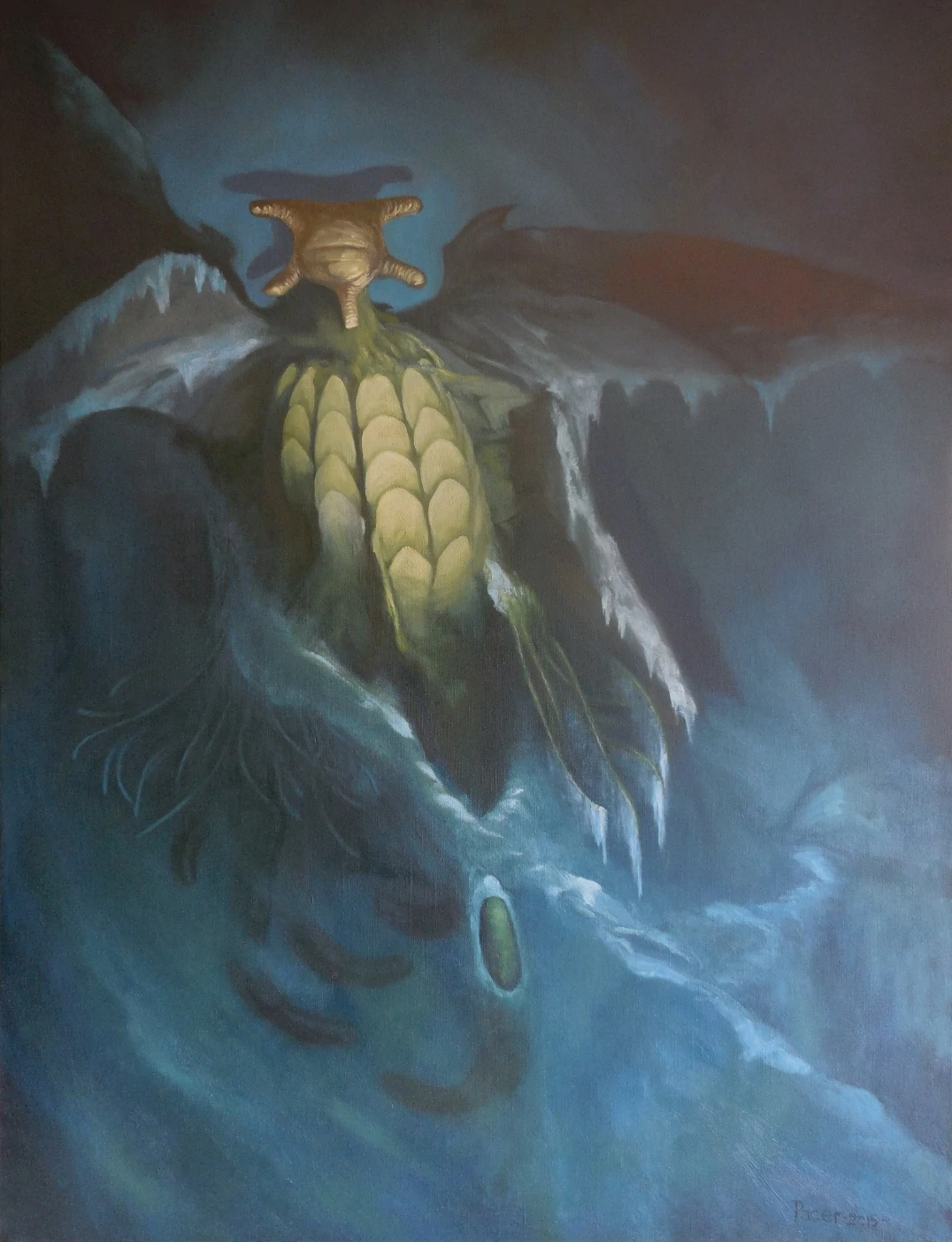
The Elder Things are a fictional alien species invented by H. P. Lovecraft that first appears in his 1936 novel At the Mountains of Madness. Lovecraft’s short works The Dreams in the Witch-House and The Shadow Out of Time contain additional references to the Old Ones. The Elder Things were the first alien species to arrive on Earth, occupying it approximately one billion years ago.
They were around six feet tall and resembled a giant, oval-shaped barrel with starfish-like appendages at both ends. They had five eyes, five eating tubes, and prismatic cilia for “seeing” in the dark. The lower appendage had five limbs. The aliens also have five sets of tentacles and five leathery, retractable wings. The Elder Things’ bodies were extremely strong, able to survive the pressures of the deepest ocean and the harsh vacuum of space.
The Elder Things established massive cities on Earth, both underwater and on dry land. They may have been responsible for the appearance of the first living forms on Earth, such as the creature known as Ubbo-Sathla. They genetically modified the deadly Shoggoths to serve as their all-purpose slave race. However, the Shoggoths eventually rebelled, hastening the deterioration and eventual demise of their civilization. They are known to have fought Cthulhu, the Great Race of Yith, and the Mi-go. Despite these fights, it was the planet’s steady freezing during the previous ice age that sealed their fate. They would have no more dealings with the outside world after retreating to their deep-sea cities.
R’lyeh
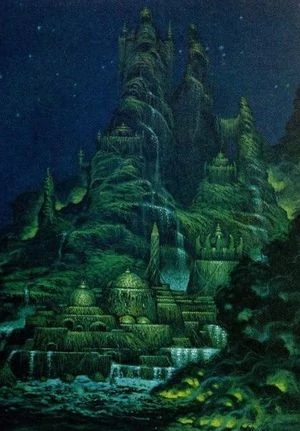
This one is not a monster but the abode of the most well-known Lovecraftian creation, Cthulu. The reason why this one is on our list is that it is tough for mortals to gaze upon this structure and we’ll tell you why. Cthulhu’s former home and current prison is R’lyeh, the most powerful of the Great Old Ones. It is frequently mentioned but never seen in H.P. Lovecraft’s Cthulhu Mythos. R’lyeh, a half-submerged fortress-city in the middle of the South Pacific, is covered in cyclopean stonework that mortals find unpleasant to gaze at. This could be owing to R’lyeh’s nature, as it is suspected of existing not only in our dimension but on numerous planes at the same time, many of which do not comply with the laws of physics as we know them.
R’lyeh, formerly the powerful Cthulhu’s palace, became the creature’s prison after the Great Old Ones were defeated in their struggle against the Elder Gods. He has remained imprisoned there since then, sleeping the sleep of the dead in the hope that one day his disciples would be able to release him. While mortals have visited R’lyeh throughout the ages, the only recorded instance of its existence comes from one Francis Wayland Thurston, who led an expedition to the island. The expedition was a failure, and all subsequent attempts to locate R’lyeh failed, implying that it had either been relocated or sunk beneath the waves to avoid detection.
Nodens
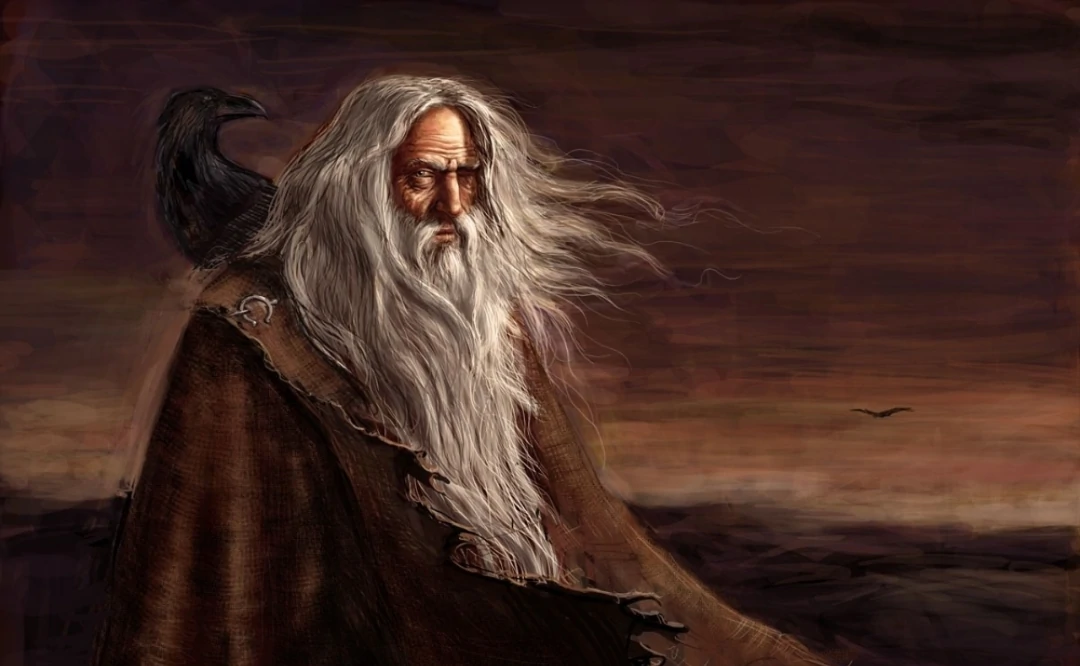
Nodens, also known as The Lord of the Great Abyss, is a heavenly being who appears in H.P. Lovecraft’s Cthulhu Mythos as one of the Elder Gods. Nodens, who appears as an ancient but still powerful human male with a flowing white beard and hair, is generally seen at the helm of his huge hunting chariot, a device made from a colossal seashell and drawn by monsters from Earth’s legendary past.
Nodens enjoys hunting the servants of the Great Old Ones and the Outer God Nyarlathotep not because he wants to do good, but because these beings provide the best fun. He is believed to enjoy pursuing Shanks in particular. Nodens has been known to assist these lesser beings on occasion, especially if doing so would hinder plans and cause irritation to one of the Great Old Ones known as Nyarlathotep. Interestingly, the notion of Nodens, as well as his name, is derived from an old Celtic deity who was also a hunter’s god.
B’gnu-Thun
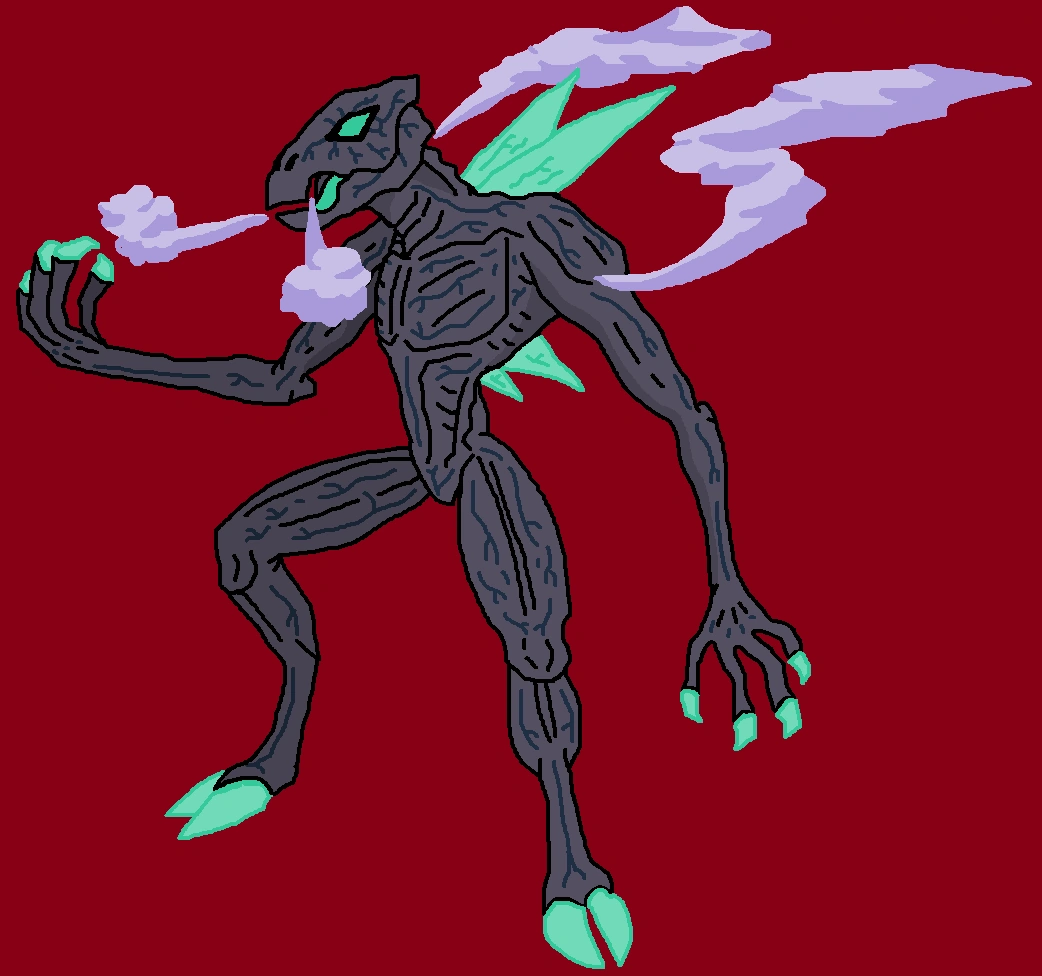
As humans, we always fear the unknown. B’gnu-Thun, also known as The Soul-Chilling Ice-God, is a Great Old One and the twin brother of the Ruhtra Dyoll in H.P. Lovecraft’s Cthulhu Mythos. Almost nothing is known about B’gnu-Thun, though it has been described as a giant humanoid creature with blue-tinged skin that is formed of ice. Wherever it goes, a terrible, unearthly storm follows, earning B’gnu-Thun its moniker. We can only imagine the godly power this one possesses because while there is not much information, from the little information that we do have, it seems formidable and its ability to control the weather is definitely frightening.
Bokrug
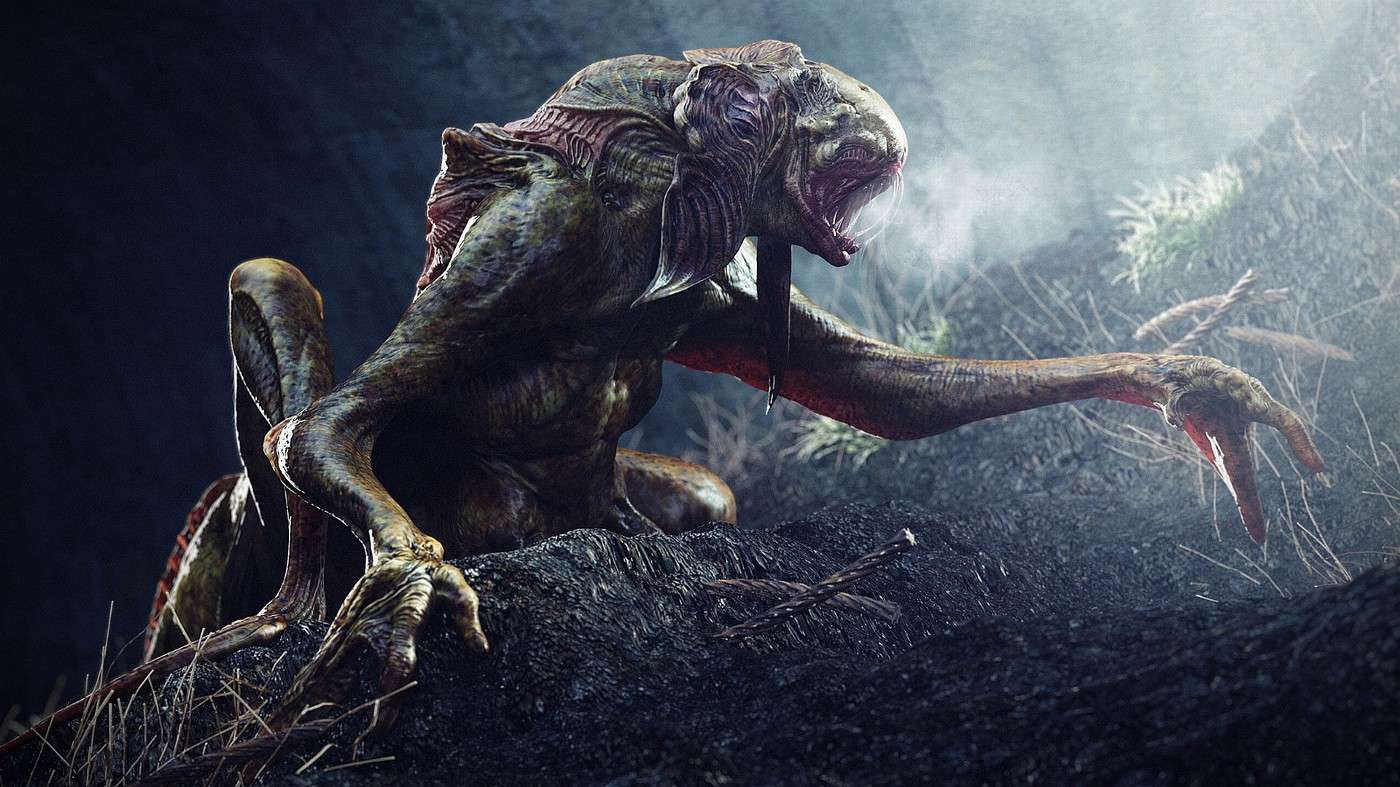
Bokrug, The Great Water Lizard, is a Great Old One from the Cthulhu Mythos created by H.P. Lovecraft. According to legend, during the celebrations for the 1000th anniversary of the fall of Ib, peculiar darkness began to descend from the moon, while a green fog rose up from the lake’s surface to meet it. The Men of Sarnath began to flee their city after seeing creatures resembling the Thunn’ha that devastated their civilization. When other Men mustered the bravery to hunt out Sarnath many years later, they discovered nothing. All that remained was an old, weed-encrusted statue. Out of dread, these men returned the statue to their own city and began to worship Bokrug.
H.P. Lovecraft’s The Doom that Came to Sarnath included the first and only appearance of Bokrug. Bokrug is the lake-dwelling god of the semi-amphibious Thuum’ha, also known as the Voiceless Ones of Ib in Mnar. The god rests beneath the placid waters of a lake that separates Ib from the city of Sarnath. The mighty deity roused when the humans of Sarnath murdered the people of Ib and took the god’s idol. Each year following that, unusual waves were said to disrupt the normally peaceful lake until the Voiceless Ones reclaimed it. Bokrug is a Great Old One as well.
Formless Spawn
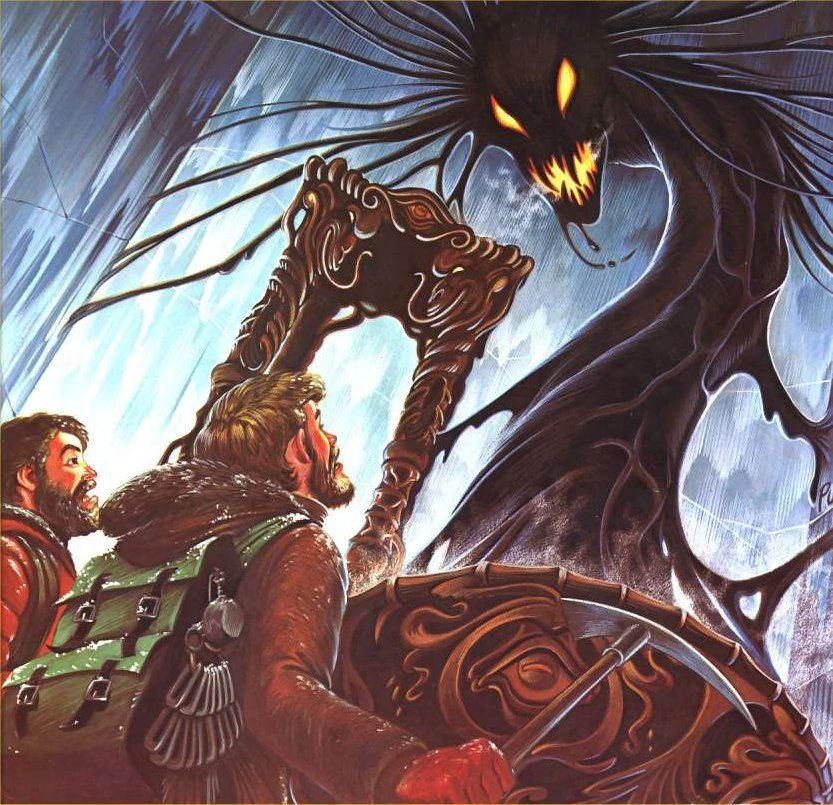
The Formless Spawn is entities from the Cthulhu Mythos created by H. P. Lovecraft. The Formless Spawn’s origins are unknown, however, they are implied to be an alien species in At the Mountains of Madness, possibly traveling to this world with their master. However, another tale claims that they were conceived by the Great Old One Sfatlicllp, however, which version is correct is unknown. Formless Spawn is found in the service of Tsathoggua, living in specially-built basins in the Great Old One’s temples, waiting for anybody who comes to desecrate these vile places.
Formless spawns are polymorphic beings formed of black ichor that resemble amorphous ooze. They are exceedingly tough and difficult to dispatch. They, like Shoggoth, may shapeshift to take numerous forms and shape appendages to fit their purposes in order to carry out their master’s orders and assault their prey in practically any imaginable way. They are incredibly flexible and plastic and can enter a room via even the smallest of cracks.
They attack by stomping, biting, or crushing their prey with their grasp. The entry on Formless Spawn in the Call of Cthulhu roleplaying game also indicates that they are strongly acidic in substance and may disintegrate human flesh with a mild touch. They are truly quite horrifying to look at because they are tough to fathom as creatures in the first place, rather than looking like a malevolent shadow that will kill you.
Dimensional Shambler
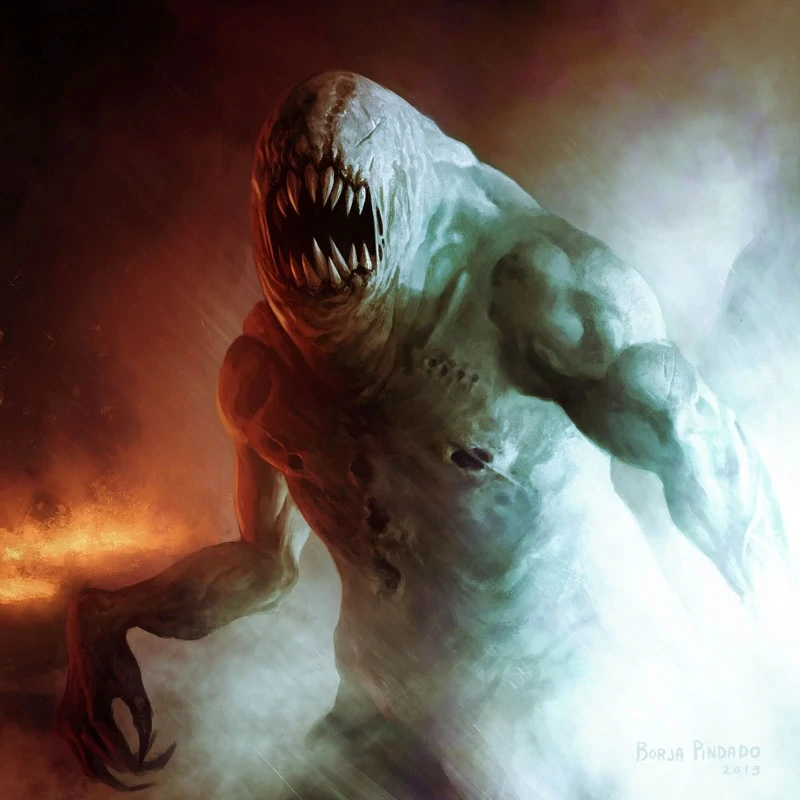
Dimensional Shamblers, also known as The Hunters from Beyond, is a species of alien beings who originate on a plane of distance very different from our own. They first appear in H.P. Lovecraft’s Cthulhu Mythos. Shamblers are hunched humanoid monstrosities with leathery grey skin, yellow slit-like eyes, and long fangs. They typically adopt a stooped, semi-simian posture, with their overlong arms dragging down the ground, capped with a pair of gigantic and brutally pointed claws. Although they look to be corporeal, their dimension-hopping nature means they have no actual physical form on Earth, which makes defeating a Shambler using traditional techniques extremely difficult, if not impossible.
Shamblers come from a dimension lower than ours, depicted as a long, murky, oozing plain beneath heavens where the vapors of Hell writhed like a million ghostly and deformed dragons. Shamblers can move between planes of reality on the spur of the moment, but how they choose their locations is unknown. It is known, however, that certain arcane rituals may be utilized to summon one and tie it to the summoner’s will. Once manifested, Shamblers will choose (or be assigned) a victim to pursue, performing short teleporting dimensional “hops” to close the space between them while appearing to grasp for their prey. Although they appear to grasp for their victim, they actually use a type of mental control to entangle them, which can be resisted by those with a strong enough will. Whatever you do, avoid becoming entangled in their psychic web.
Dreamlands
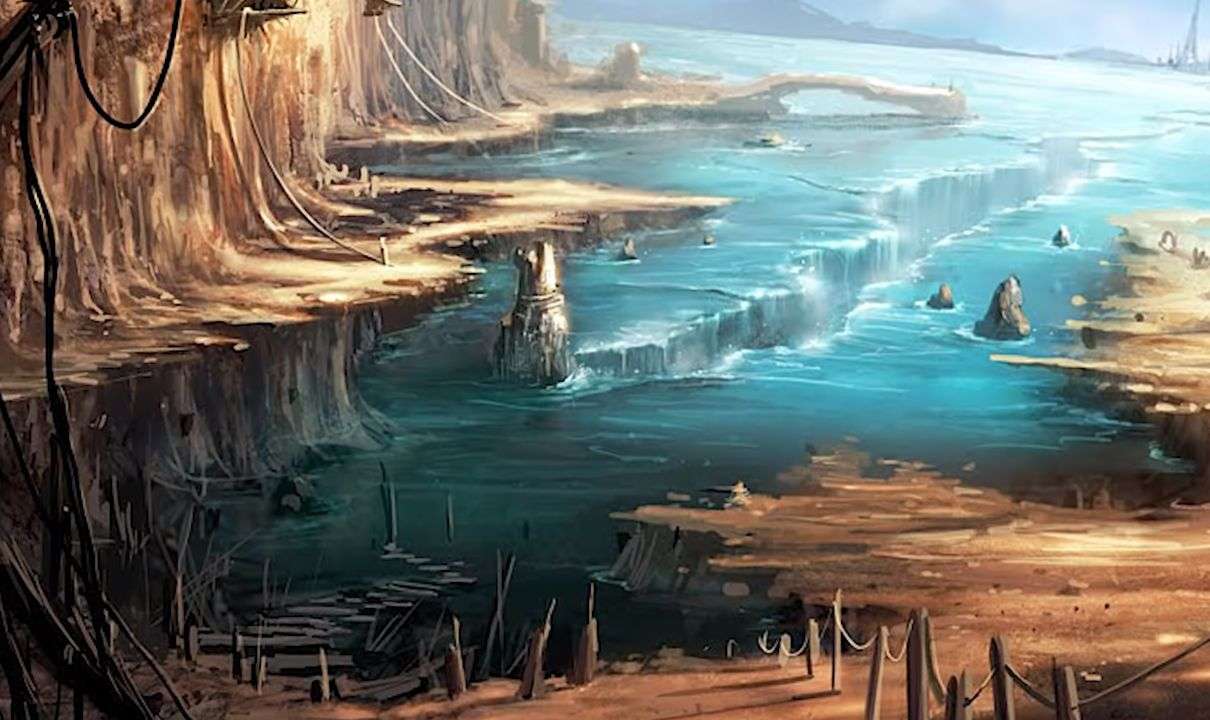
This is the second place featured on our list because of how unfathomable it is to regular humans. The Dreamlands, a huge continent with its own another dimension, serve as the backdrop for many of the stories in H.P. Lovecraft’s Cthulhu Mythos. The Dreamlands, created from and sustained by the very stuff of dreams, have a topography as diverse as that found on Earth; in fact, anything that can be dreamed of by men can be willed into existence there. It can, however, be broadly divided into six components.
The rugged north includes the Leng Plateau. The East is home to Celephas, the great city. The great Southern Sea dominates the south, which is home to the island city of Orab. Another desert, but also the city of Ulthar, lies to the west. Fifth, there’s the Moon, which is hollow and home to a bizarre race called Moon-Beasts. The Underworld is a monster-infested environment.
While there are far too many Dreamlanders to name, it should be noted that the vast majority of them appear to be human. Indeed, many mortals have opted to dwell in the Dreamlands, abandoning all ties to the waking world in search of a better life. The Dreamlands are also home to a great variety of unusual and frequently hostile beings, though it should be noted that despite their capacity to shift between realities on the fly, the Great Old Ones and the Outer Gods have found it incredibly difficult to obtain admission to this realm.
Shub-Niggurath
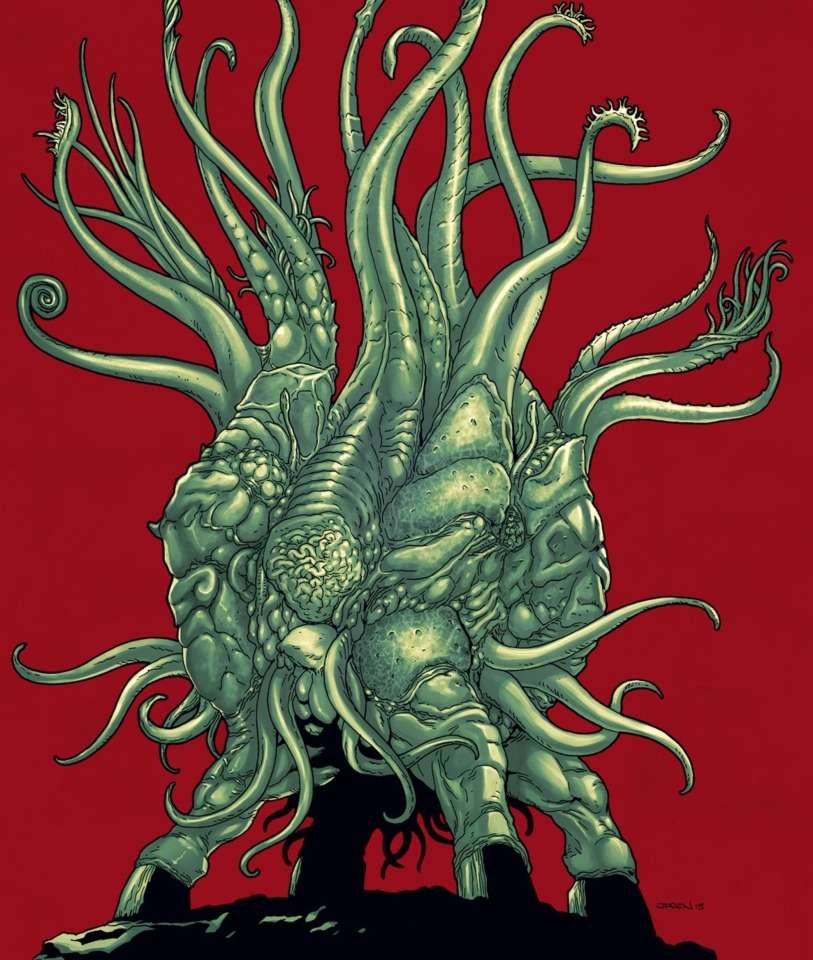
Shub-Niggurath, also known as “The Black Goat of the Woods with a Thousand Young,” is a deity in H. P. Lovecraft’s Cthulhu Mythos. The entity is often referred to as “The Black Ram of The Forest with a Thousand Ewes,” adding a masculine gender to what is commonly regarded to be a feminine entity.
Shub-Niggurath is named for the first time in Lovecraft’s revised story “The Last Test”; she is never described in Lovecraft’s literature, but is frequently mentioned or invoked in incantations. Other Mythos authors, such as August Derleth, Robert Bloch, and Ramsey Campbell, were responsible for the majority of her development as a literary personality.
Shub-Niggurath was classed as a Great Old One by August Derleth, although she is classified as an Outer God in the Call of Cthulhu role-playing game. In turn, the CthulhuTech role-playing game has returned to Derleth’s designation of Shub-Niggurath as a Great Old One. She is a perverted fertility deity that appears as a massive hazy mass with black tentacles, slime-dripping mouths, and short, writhing goat legs. Small creatures are spat forth, either to be reabsorbed into the miasmatic form or to flee to some other horrific life.
Spider of Leng
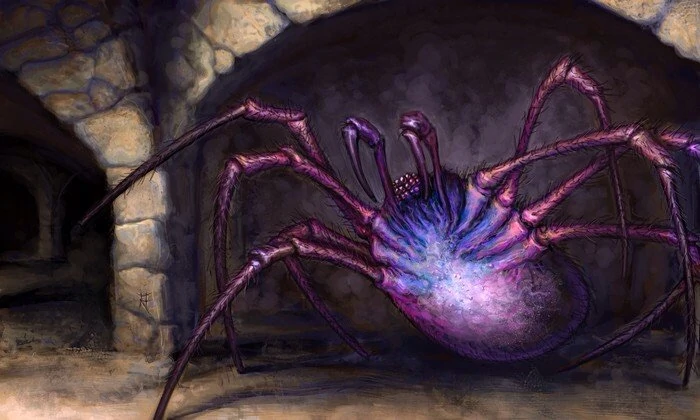
The Spiders of Leng, sometimes known as the Leng Spiders, are creatures from H.P. Lovecraft’s Cthulhu Mythos. Look away if you are afraid of spiders because this will definitely trigger your arachnophobia. They are purple arachnids that resemble Earth spiders but on a far bigger scale, the smallest Spiders of Leng are the size of a Shetland pony, while larger specimens tower over an elephant, feeling queasy yet? They have significantly more intellect than conventional creatures, yet they are not immune to cannibalization by other Leng Spiders. While they can spin webs to paralyze their victims, they also have a powerful poisonous bite and the ability to climb sheer surfaces, just like their waking-world counterparts.
Ages ago, the Spiders ruled the entire Plateau of Leng in the Dreamlands, until defeat in a long conflict with the Men of Leng forced them to forsake much of their homeland and withdraw to the strange land’s southern mountains and valleys. They still live there, ready to prey on any creature foolish or unwary enough to wander into their realm.
Hydra (Mother Hydra)
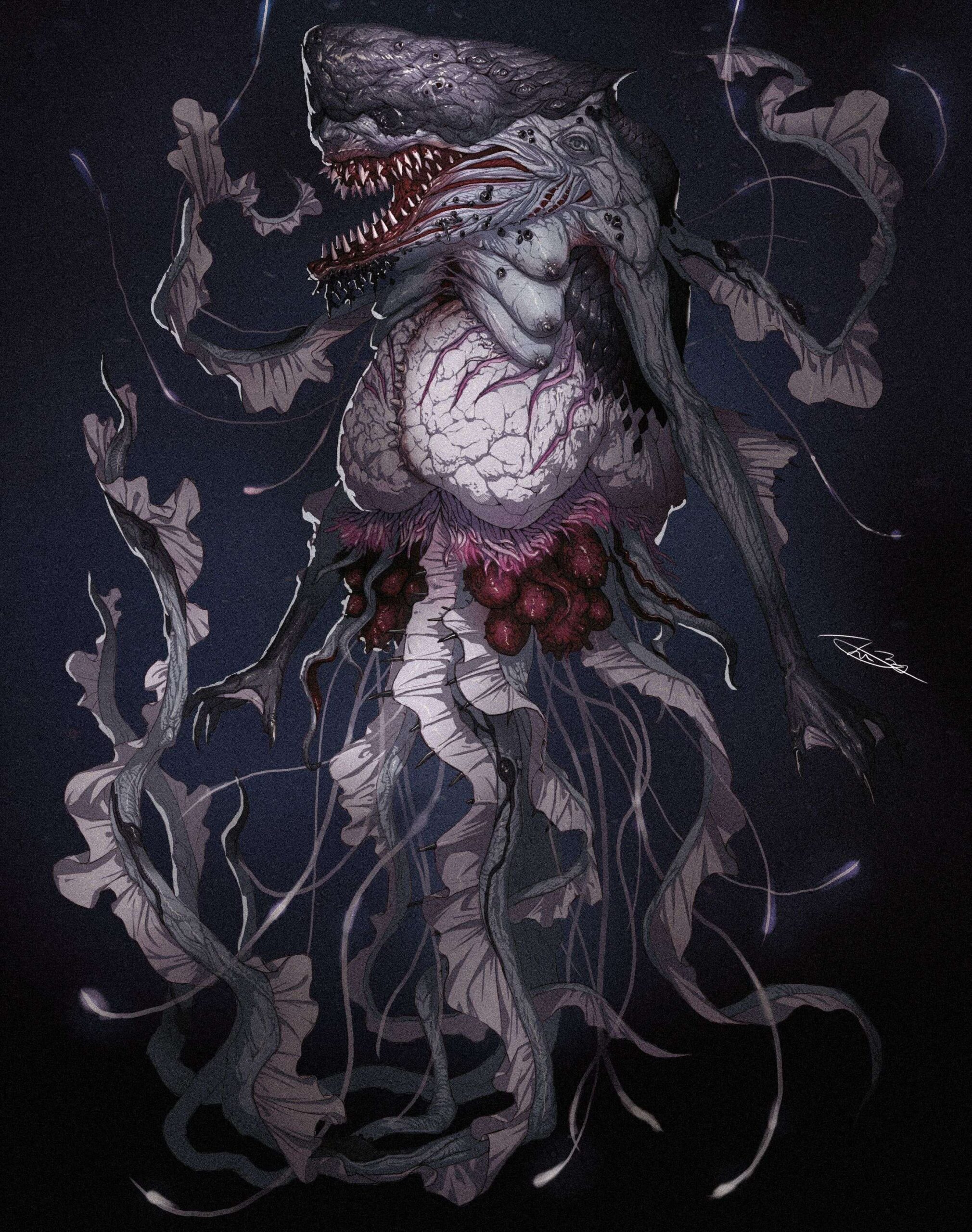
Mother Hydra is a massive humanoid entity with a fish-like face, flapping gills, and Piscean skin that is said to resemble a colossal Deep One. She, Father Dagon, and Great Cthulhu form the “holy trinity” of the Deep Ones, the three creatures venerated as gods by that aquatic race. There is great controversy over whether Mother Hydra is a Great Old One or simply a hugely expanded Deep One, given that some Deep Ones continue to grow as they age.
It does not make her any less terrifying actually. In fact, it should be noted that Cthulhu has entrusted Hydra and her partner Dagon with the supervision of his “daughter” Cthylla. This is a duty they carry out beneath the North Atlantic in one of the Deep Ones’ vast submarine cities.
During Project X in March 1980, Mother Hydra was one of the Wilmarth Foundations’ objectives. The plan was eventually unsuccessful, and she and Father Dagon and Cthylla were able to escape the partial devastation of the Deep One city outside Innsmouth harbor. She continues to watch over Cthylla and protect her.
Dunwich Horror
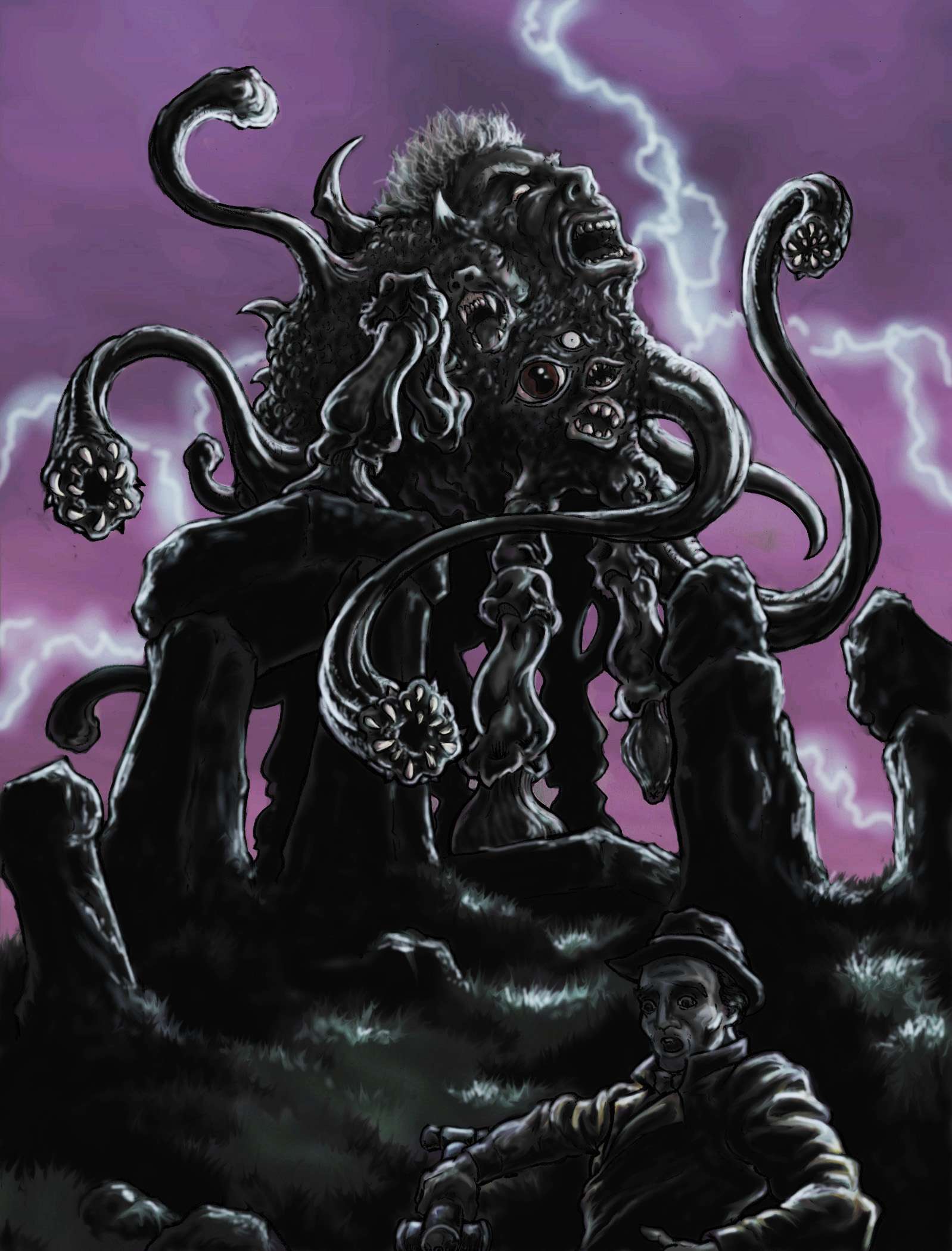
The Dunwich Horror, real name Yog Whateley, is a creature from H.P. Lovecraft’s Cthulhu Mythos. The Dunwich Horror first appeared in the short story of the same name, which is widely regarded as one of Lovecraft’s foundational works. Although normally invisible to the naked sight, the Dunwich Horror might be made visible by using an arcane powder whose recipe can be found in the ancient book of evil known as the Necronomicon.
Its true appearance was so foreign to the mortal mind that simply seeing it was enough to drive the spectator insane, but it was known to be a beast of colossal proportions, easily capable of swallowing many cattle, or for that matter, people, in a single sitting. It was also known to leave a dark, viscous substance in its wake wherever it went.
The Horror was born in secret to the malformed albino lady Lavinia Whateley in the Dunwich township, and his father was none other than the Outer God Yog-Sothoth, who planned to utilize his offspring as a portal to the mundane worlds. It was kept hidden away in the Whateley farmhouse and nourished on cattle by its mother and grandfather until the former inexplicably vanished and the latter died. It was thereafter cared for by its brother Wilbur, who was killed while attempting to steal a copy of the Necronomicon from Miskatonic University in order to call Yog-Sothoth. After this, it went on a rampage with no one to look after it.
Shathak
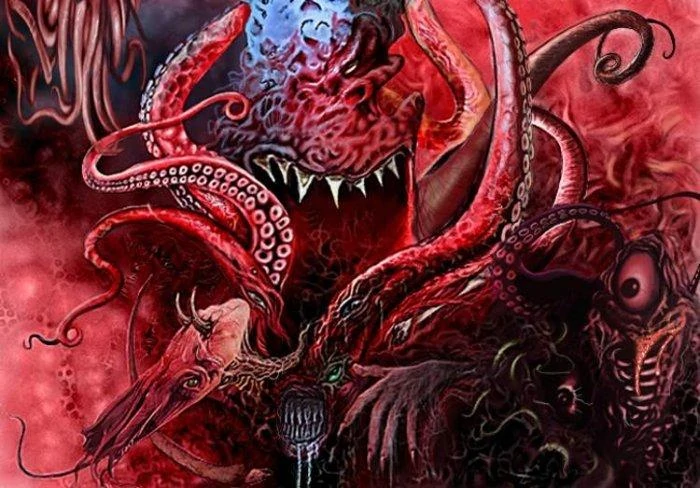
Shathak, also known as Chushax or Zishaik, is a Great Old One from H.P. Lovecraft’s Cthulhu Mythos. Shathak is barely known, but according to the ancient documents known as the Parchments of Pnom, she married Tsathoggua on the planet Yaksh, now known as Neptune, and gave birth to the Great Old One Zvilpogghua. Her whereabouts and present activities are unknown. Clark Ashton Smith created Shathak but did not expand on it. Some elements were connected by Laurence J. Cornford. Its appearance on the other hand is extremely scary, being a gigantic tentacled monster. The Great Old Ones are in general a race that is quite formidable. You wouldn’t want to be targeted by them or get entangled in their affairs.
Zvilpogghua
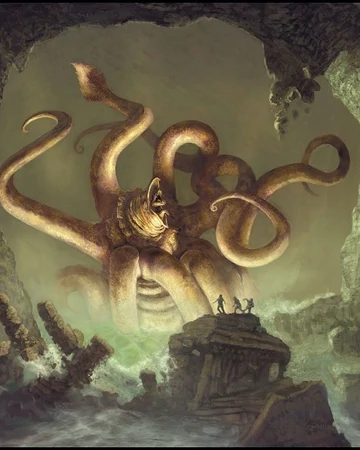
Zvilpogghua, also known as Ossadagiwah, Zvilpogggua, The Star Beast, or The Feaster from the Stars, is a Great Old One from H.P. Lovecraft’s Cthulhu Mythos. Zvilpogghua usually takes the form of a huge bipedal toad with no arms but a pair of leathery wings. It also had a long neck and a face covered in thick, grabbing tentacles, according to legend. This dread monster is mentioned in the occult book “Of Evill Sorceries Done in New-England of Daemons in no Humane Shape.”
Zvilpogghua is capable of generating an avatar known as The Star Beast, which these peoples periodically summoned. However, this was only done in the most desperate of circumstances because once summoned, the beast would only return to the sky when it wanted. It is uncertain what shape this avatar took.
Zvilpogghua is thought to have been born on the planet Yaksh to the Great Old Ones Tsathoggua and Shathak, and now lives on the planet Yrautram, which orbits the star Algol in the constellation Perseus. Clark Ashton Smith coined the name Zvilpogghua, but it was never developed. In “The Lurker at the Threshold,” August Derleth created Zvilpoggua from an unfinished piece by H. P. Lovecraft.
Ghatanothoa

The firstborn of Cthulhu and Idh-yaa, and sibling of Ythogtha, Zoth-Ommog, and Cthylla, Ghatanothoa is an enormous, amorphous god-like being whose appearance is so hideous that anyone who looks upon it, or even an image of it, will be instantly immobilized, turned into what amounts to a living mummy with their skin assuming a leathery texture and their internal organs preserved for all time. Anyone unfortunate enough to suffer from this fate will be utterly paralysed while remaining fully cognizant and aware; only the annihilation of the brain will release this wretched soul from its anguish.
Ghatanothoa, spawned by Cthulhu and Idh-yaa on the planet Xoth, was taken to Earth millennia ago by an ancient alien species, who entombed it beneath Mount Yaddith-Gho on the lost continent of Mu, which now lies at the bottom of the Pacific Ocean. It has remained in servitude ever since, worshipped first by the Lloigor and subsequently by the humans who resettled Mu. Many have attempted to destroy Ghatanothoa over the millennia. T’yog, the high priest of Shub-Niggurath, developed a magical scroll to defend himself from the dark god’s terrifying appearance in the Year of the Red Moon (173,148 B.C.). This endeavor domed him to a horrific death when Ghatanothoa’s own priests covertly replaced the artifact with a forgery.
Gloon

Gloon is also known as The Corruptor of Flesh, The Master of the Temple, and Ghluun. It is a Great Old One who appears in H.P. Lovecraft’s Cthulhu Mythos. Gloon’s real look is that of a leathery, bloated slug with large flaps of skin hanging from its body. Despite being imprisoned by powerful sorcery on the lost continent of Atlantis for a long time, Gloon is occasionally able to manifest its true form through its avatars, and even those who simply touch the diminutive statues will experience strange dreams of cyclopean ruins beneath the sea. Those affected by such dreams have an overwhelming desire to find the ruins, to the point of drowning themselves in the process.
Gloon is said to be the custodian of a vast temple in Atlantis that serves as a portal to another dimension, though the contents of this realm are unknown. Although there are no human worshipers of Gloon in the present period, he appears to have a following among aquatic species, with dolphins, in particular, showing a penchant for following his statues. His appearance is largely depicted as somewhat of a modern Greek God statue but doesn’t be fooled by that.
Yuggoth
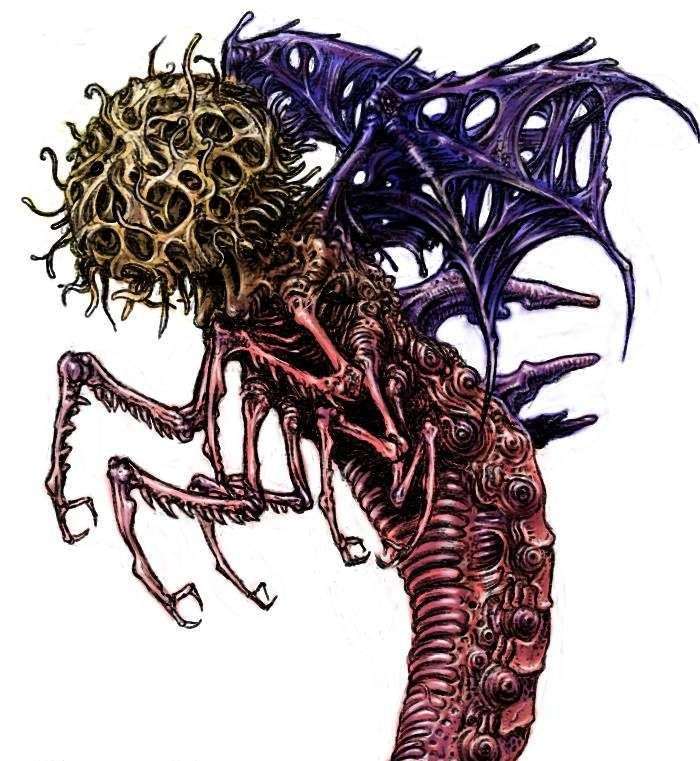
The third-place we are featuring in our list is no less than a monster since it has the capability to drive humans insane. Yuggoth, sometimes known as Iukkoth, is a planet from H.P. Lovecraft’s Cthulhu Mythos. While some sources claim Yuggoth is the planet Pluto, others claim it is a massive trans-Neptunian globe twice the size of Jupiter; whatever the reality is, Yuggoth is located on the outskirts of our solar system.
Yuggoth, according to Gla’aki’s Revelations, was the birthplace of a now-extinct species of aliens, whose abandoned cities of black stone and emerald pyramids still litter the frigid earth. Instead of water, the planet is partially covered in oceans and rivers of a heated, black, tar-like substance, its surface is battered by ferocious winds, and the overall aspect of the dark world is enough to drive a man insane.
Post the extinction of the original Yuggothians, a variety of creatures have dwelt there, including the Outer God Cxaxukluth and his family, but all but Cxaxukluth have since gone on. The extraterrestrial Mi-go have also created a colony on Yuggoth, establishing their city on the rim of the hole inhabited by the Outer God, which means they must evacuate on a regular basis when Cxaxukluth rises its eldritch head to the surface.
Gnoph-Keh
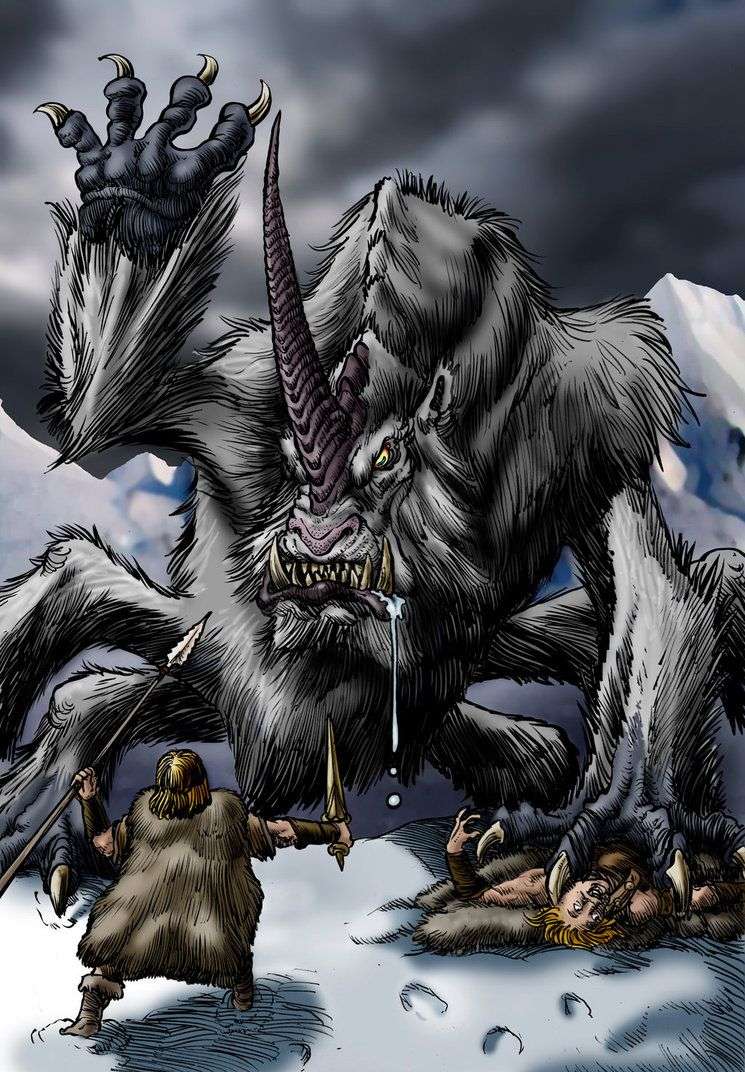
Gnoph-Keh looks to be an extraordinarily huge member of the Gnophkeh race, spawned by the Great Old One Aphoom-Zhah; indeed, he may be the species’ progenitor. It is described as a six-legged Polar Bear with vicious claws, long matted white hair, and a single huge horn resembling that of a Narwhal. Gnoph-Keh has been identified as a cannibalistic entity. Gnoph-Keh is currently imprisoned beneath the cold surface of Hyperborea, which encompasses Greenland in our time. It is unknown how he got to be there, though it is probable that he was trapped when Aphoom-Zhah and Ithaqua carried out their partially successful plan to freeze the planet.
Blizzard summoning and temperature reduction abilities are among their many powers. They are linked to Rhan-Tegoth, whom they appear to worship and possibly Ithaqua, Zhar, and Lloigor. It is described in early records such as the Book of Eibon as a race of viscous cannibals expelled from Lomar by humans and the Voormis, but it later appears as a lone creature, commonly referred to as “the Hairy Thing,” and is confused with Rhan-Tegoth. Although hairy reptiles are uncommon, some writings refer to them as “reptilian.” It is currently on the verge of extinction and can only be found in one. The Gnophkeh is either air or water creatures.
Wilbur Whateley

Wilbur Whateley was a Cthulhu Mythos demi-human being created by H.P. Lovecraft. Wilbur, who was almost nine feet tall and still growing at the time of his death, wore enormous garments to conceal his rapidly deteriorating body. Although his hands and face were human-like, the skin on his upper body was scaled like that of a reptile, with crocodilian-like armor plating across the chest.
His skin was covered in a thick covering of black fur, and a forest of greenish-grey appendages with red-rimmed, sucking mouths sprang from his abdomen. Wilbur had what seemed to be a rudimentary eye on each of his hips, and where some animals have a tail, Wilbur had a weird trunk-like protrusion resembling an immature throat. He possessed dinosaur-like legs that ended in misshapen, clawed hooves, and instead of blood, he had a filthy, sticky, greenish-yellow ichor.
Wilbur, the son of Lavinia Whateley and the Outer God Yog-Sothoth, grew up swiftly, starting to talk at eleven months and appearing as a fifteen-year-old boy at the age of four and a half. Wilbur was home-schooled by his grandfather for the first few years of his childhood because he was disliked by the other children of Dunwich and was aggressively attacked by their dogs.
There, his grandfather, known locally as ‘Wizard Whateley,’ taught him all sorts of evil magics, as well as the worship and summoning of banned beings. Wilbur cared after his brother, the Dunwich Terror, on his own in the years following the deaths of his mother and grandfather, but he also pursued his studies in the black arts.
Gobogeg
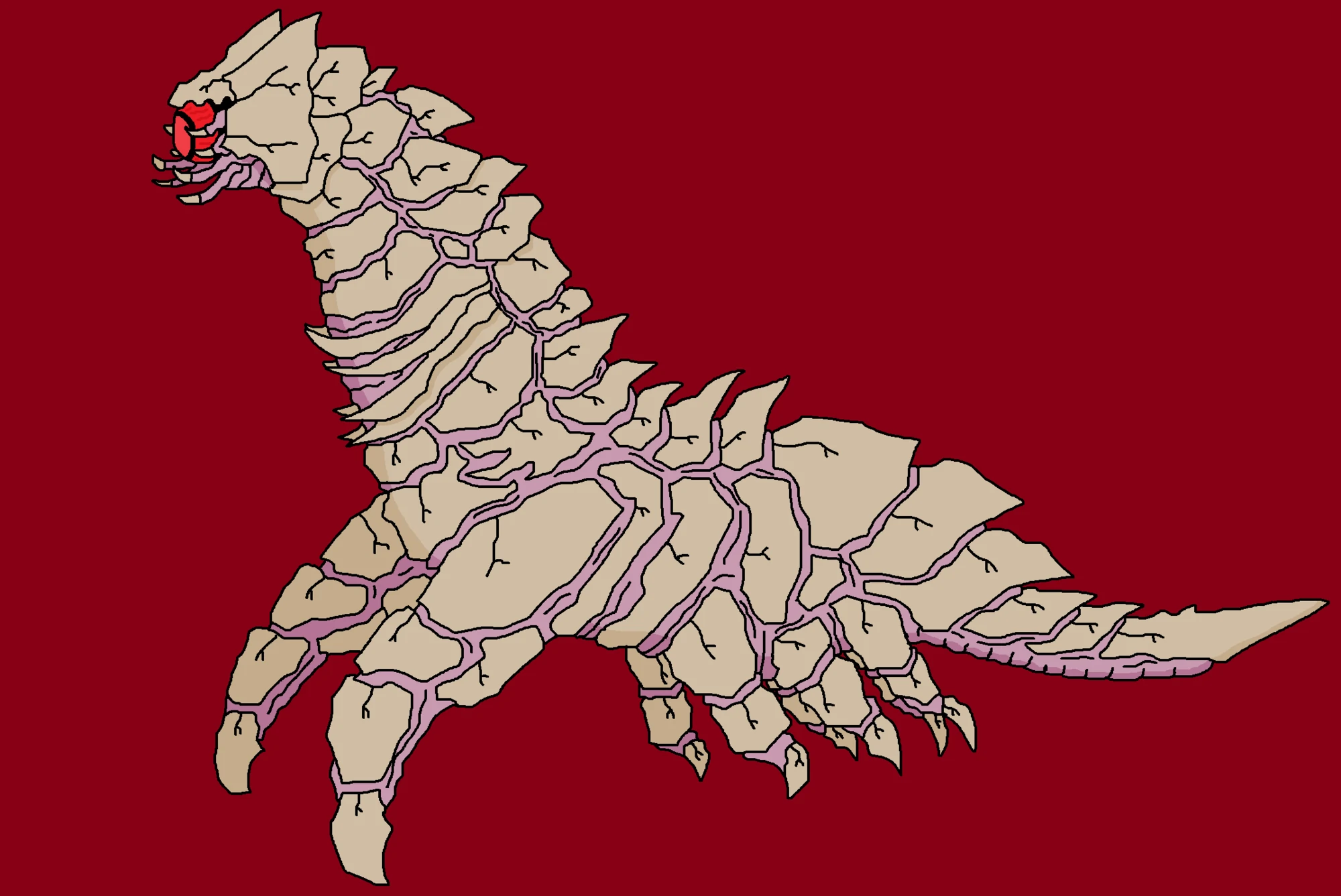
Gobogeg, also known as The Twice-Invoked and the Moon-Ladder, is a Great Old One from the Cthulhu Mythos created by H.P. Lovecraft. While little is known about the dread Gobogeg, what is known is that it appears as a huge column of changing, pulsating eldritch flesh, with a single baleful eye at the tip of its tentacle-like body.
When it appears, tremendous earthquakes damage the surrounding areas, and it is reported to be capable of causing entire universes to implode simply by their existence. To make matters worse, when Gobogeg is called, it literally drags up the entire continent as it ascends skyward, causing the entire globe to collapse in on itself. Sandy Peterson was the one who built on Lovecraft’s hazy description of “moon-ladder” and other visions.
Hastur
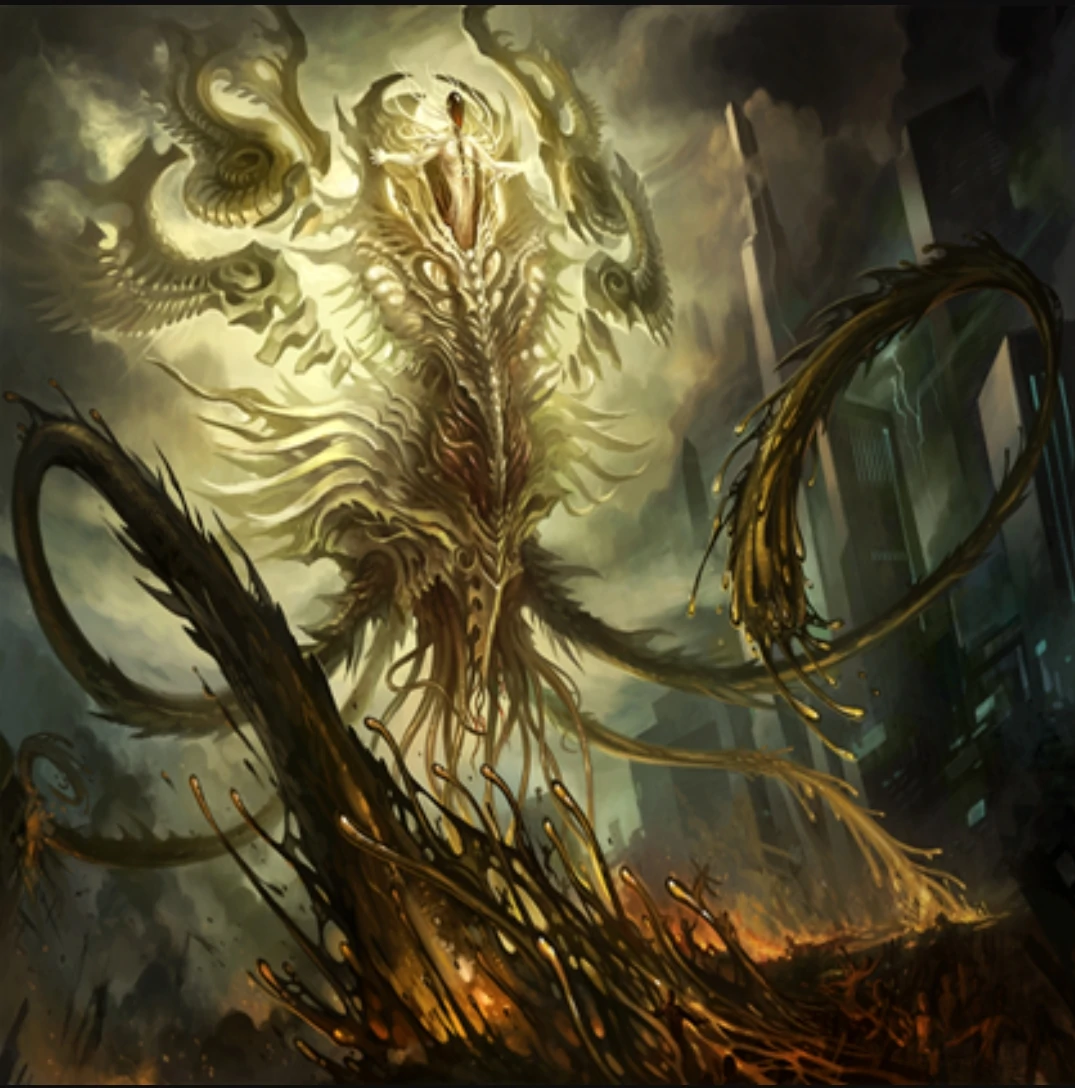
Hastur, sometimes known as the King in Yellow, is a hypothetical cosmic entity initially introduced in Ambrose Bierce’s short story Hata the Shepherd and developed by Robert W. Chambers, H.P. Lovecraft, and August Derleth. Hastur first appeared in Ambrose Bierce’s short novel Hata the Shepherd, where he was portrayed as a loving shepherd god.
The word “Hastur” is used to denote numerous elements, including character and setting, in Chambers’ The King in Yellow, a collection of horror stories. Hastur was mentioned in Lovecraft’s The Whisperer in Darkness, along with many other deities and locations from his own mythology, such as Cthulhu. Lovecraft’s buddy August Derleth transformed Hastur into a Great Old One, half-brother to Cthulhu and spawn of Yog-Sothoth, who lives in Carcosa. Hastur and Cthulhu were also pitted against each other in Derleth.
Hound of Tindalos
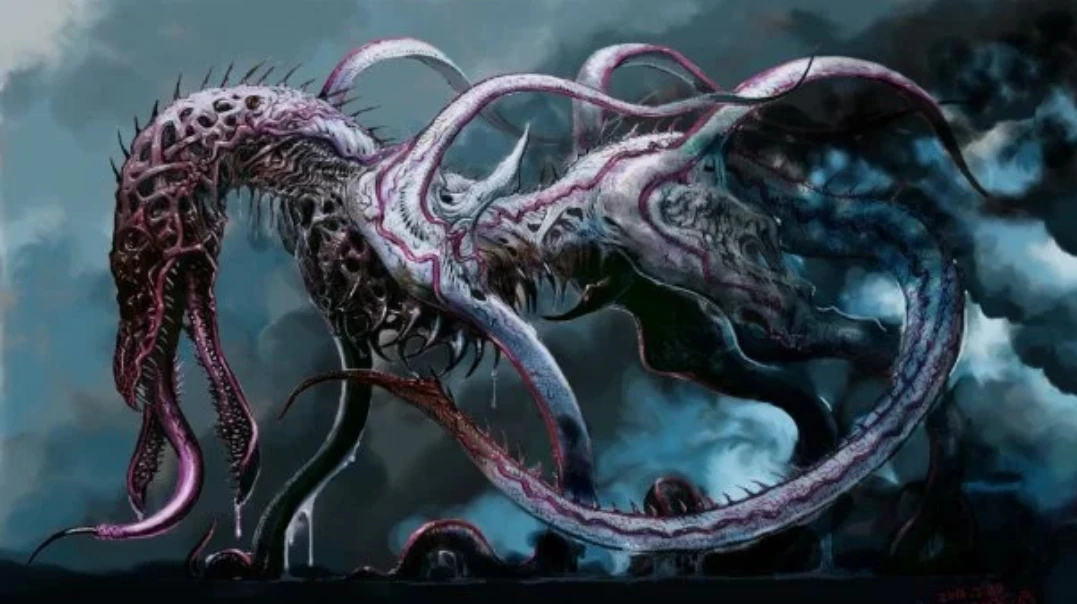
Frank Belknap Long developed the Hounds of Tindalos, which August Derleth eventually included into the Cthulhu Mythos. It is uncertain if the Hounds naturally survived the ages to the present day, or whether it was their ability to span great expanses of time and space that allowed them to do so. They originated in the Earth’s remote past when other life had yet to grow beyond the single-cell organism level. In either instance, they are dominated by the most powerful member of their kind, a mighty entity known as Mh’ithrha, in the contemporary age.
Although their actual form is unknown, intergalactic time-traveler Titus Crow described them as having the appearance of bat-like rags, while other sources indicate they have lengthy proboscises to drain their prey’s bodily fluids and continually spew a horrible blue ichor. Despite being called the Hounds of Tindalos, the name refers to the creatures’ behavior more than any similarity to a canid.
Hounds are hunters who seek some unexplainable something in humans, and once they detect the smell of a man, generally the trail of a time traveler, the creatures will track their victims across time and space to feed. To that end, Hounds can manifest themselves through sharp corners; this is due to the fact that, whereas most life inhabits the curves of time, Hounds dwell in the angles.
Hunting Horror
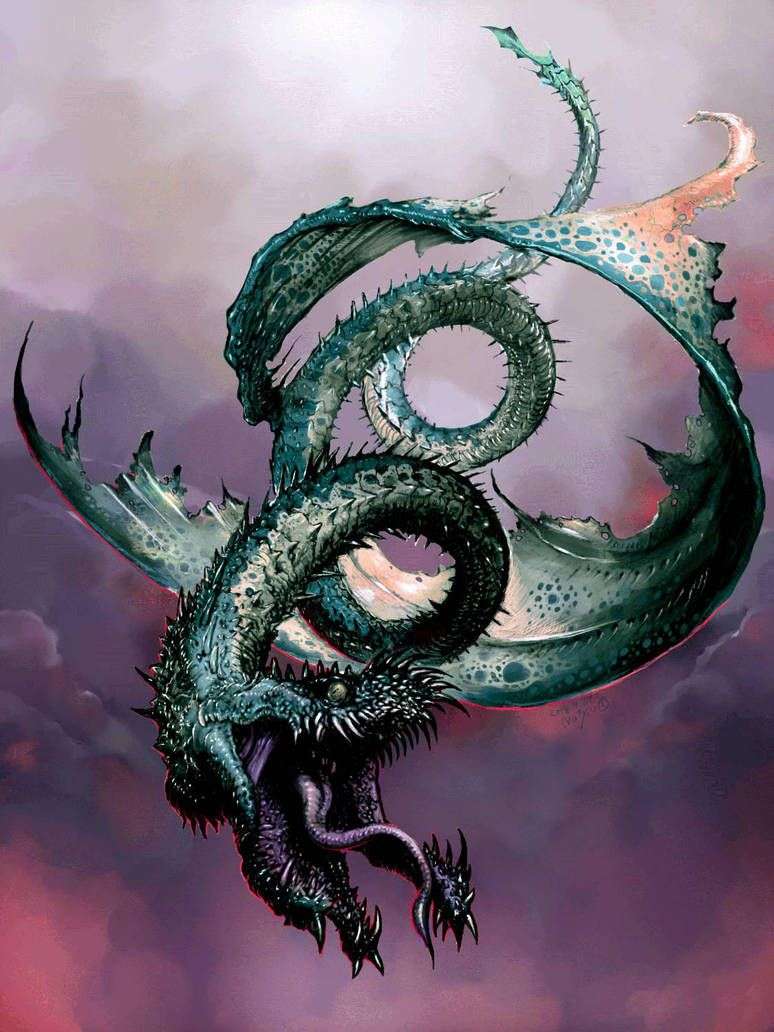
The Hunting Horrors are enormous monsters that resemble gigantic annelids or serpents. They also have a massive pair of bat or dragon-like wings with a rubbery texture, curiously malformed heads, and twisted appendages that finish in vicious talons. Their bodily shapes are supposed to alter and change all the time, making it impossible to focus on the creature as a whole. The Horrors, who serve Nyarlathotep as attack dogs, have a great antipathy to light in all its manifestations; in fact, a strong enough blast of light can turn one to ash. However, that does not mean that they aren’t formidable foes, especially for humans.
Innsmouth
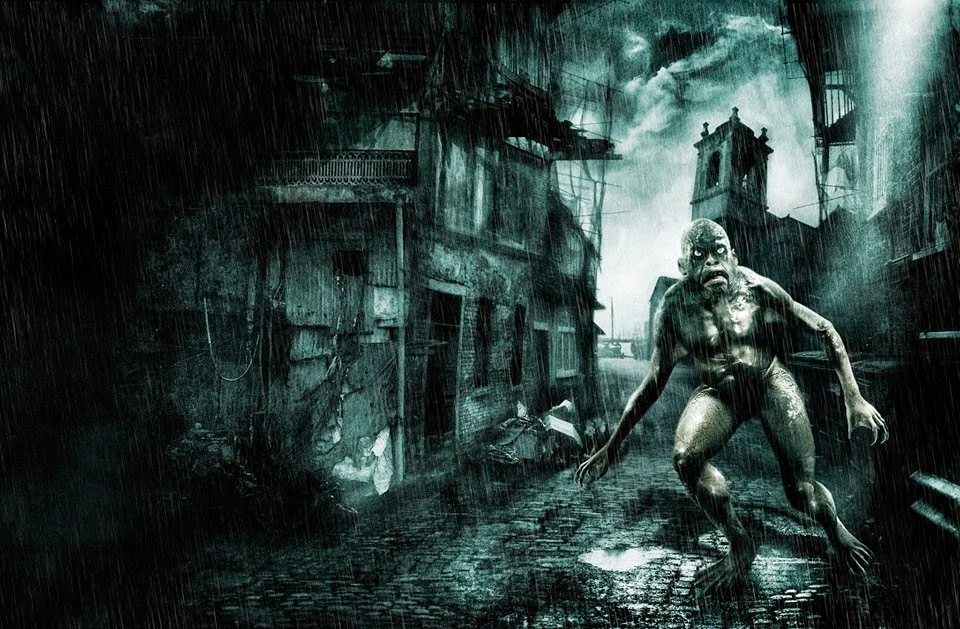
This one isn’t a monster but one of the most popular places featured in all of the Lovecraftian lore. Innsmouth, Massachusetts, is a town that has been significantly urbanized despite its lack of human population. It is located in a wide coastal bay somewhere in Essex County. The place gives off an image of desolation and decay, with many of its largely wooden structures abandoned to rot over time.
Despite the fact that vast areas of Innsmouth were destroyed in the first half of the twentieth century, it nevertheless appears to resemble the slums of 18th-century London. Recent development activity in Innsmouth would suggest that it is experiencing some urban revitalization, albeit who or what is behind these new projects is unknown, yet visitors to the town have always felt like they were intruding upon something.
While many of the townships on Massachusetts’ shore faced the same difficulties as Innsmouth, Obed was certain that this should not happen to him. Based on the habits of certain degenerate Polynesian islanders with whom he had previously conducted trade, Obed formed a religion through which he made contact with the oceanic monstrosities known as Deep Ones. He discovered that the Deep Ones were always looking to expand their sphere of influence, so he struck a deal with them: in exchange for bountiful catches of fish and exotic gold jewelry to ensure Innsmouth’s prosperity, the town would supply a portion of its members as a breeding supply to mate with the Deep Ones. These turned into hybrids and finally left Innsmouth to go live under the sea.
Venus
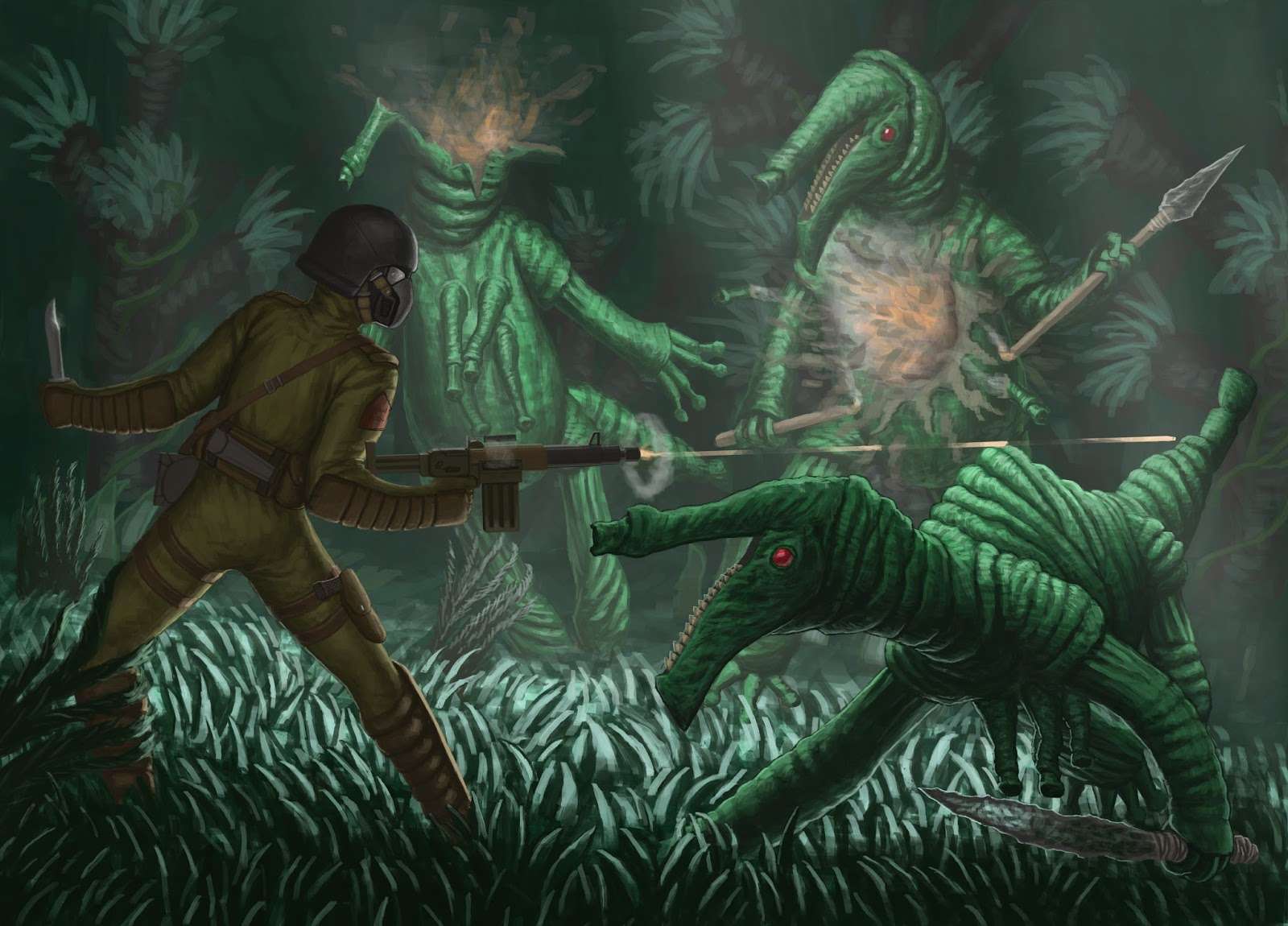
Another Lovecraftian place that is beyond human imagination is a planet called Venus. No, it is not the regular one in our solar system but is one inhabited by primitive humanoid Lizardmen. Venus, the second planet from the sun, appears in H. P. Lovecraft’s short novel In the Walls of Eryx. Unlike the real Venus, Lovecraft’s Venus is a lush jungle planet with a tropical climate and an atmosphere that is deadly to humans but not dangerous enough to necessitate a hermetically sealed space suit.
Because of crystal orbs that may be used as a source of electrical energy, the planet was chosen as a mining world. These orbs are fiercely defended by the planet’s native people, a race of primitive lizardmen who believe the crystals have religious significance. Eryx, often known as the Eryncian Highland, is the setting for the story. Its single known feature is an invisible maze, which is thought to have been employed as a trap for human crystal miners by the lizardmen due to the crystal that lies in its center.
Shaggai
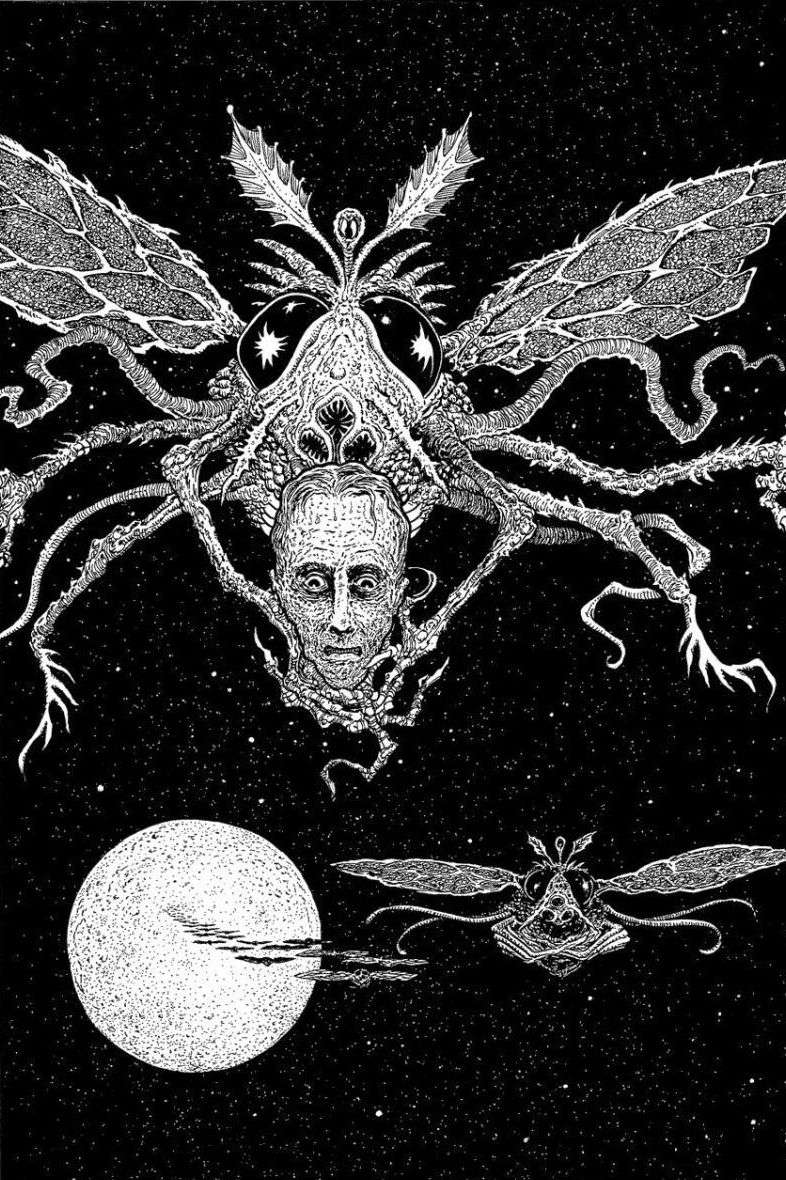
Shaggai, sometimes known as Chag-Hai, was a planet in H.P. Lovecraft’s Cthulhu Mythos. Shaggai, the former homeworld of the alien species known as the Shan, orbited a binary system made of twin emerald stars considered to be situated somewhere in the Andromeda Galaxy. Originally inhabited by the spacefaring Insects of Shaggai, this once-proud world was destroyed around eight hundred years ago by unknown means, though it is suspected that the nearby passage of the Outer God Ghroth – possibly under the direction of the alien Mi-go for unknown reasons – bombarded Shaggai into oblivion with its crimson radiation. Even if Ghroth had not flown by the planet, the Great Old One known as The Worm that Gnaws in the Night was already eating Shaggai from the inside out; the planet was doomed anyway. This one is another planet where human existence is absolutely unfathomable and monsters roam free.
This brings us to our massive list of Lovecraftian monsters. Which one sends shiver down your spine?
